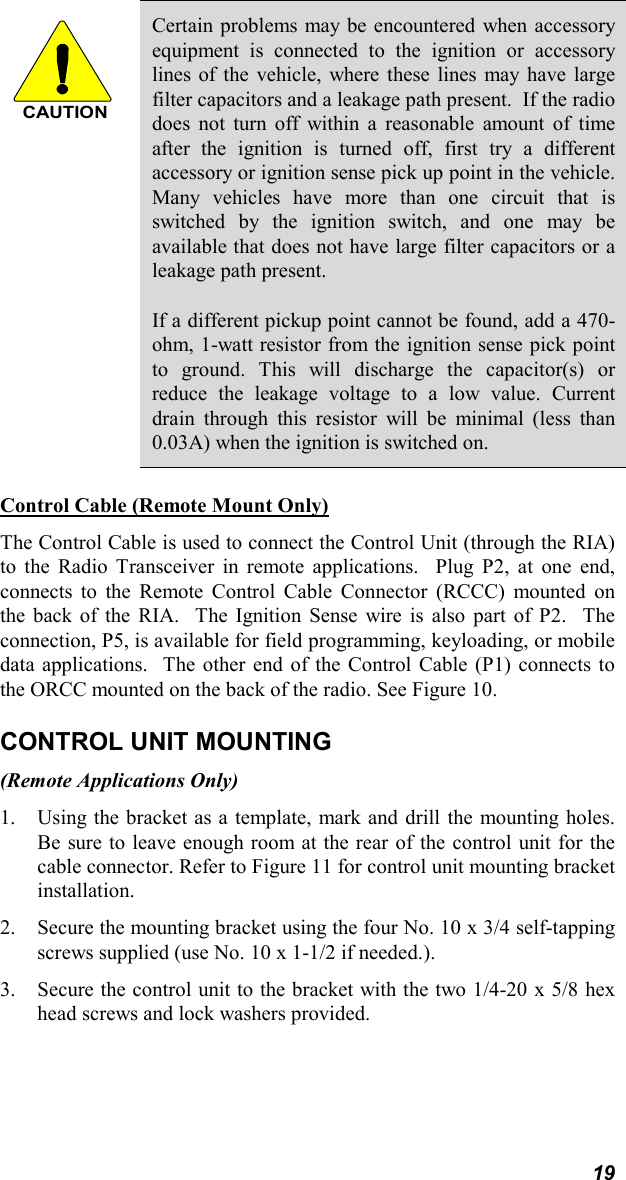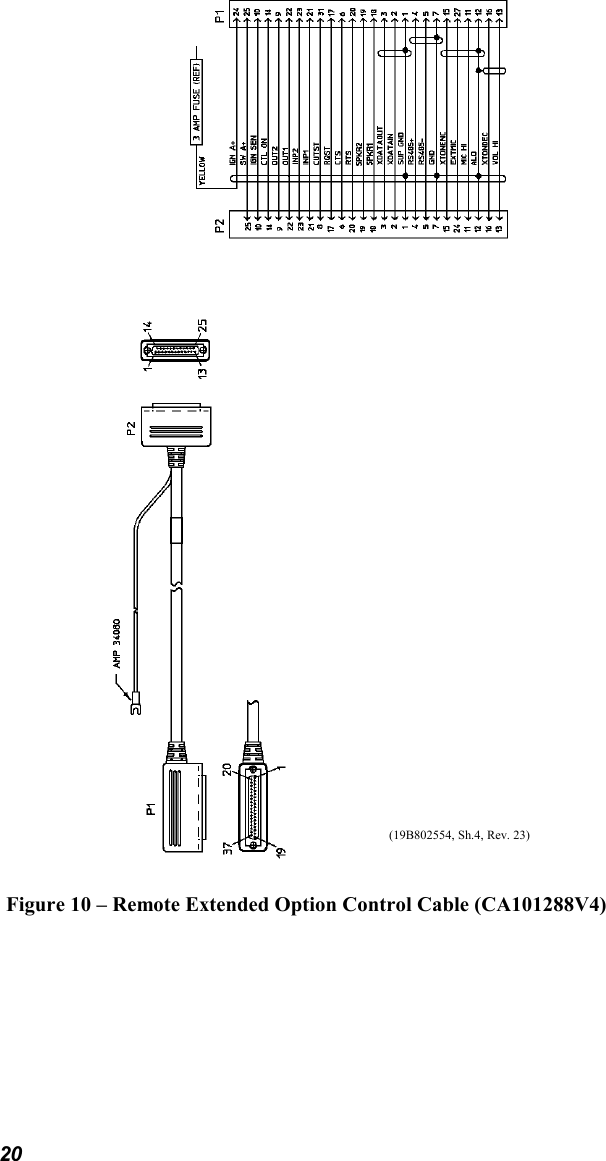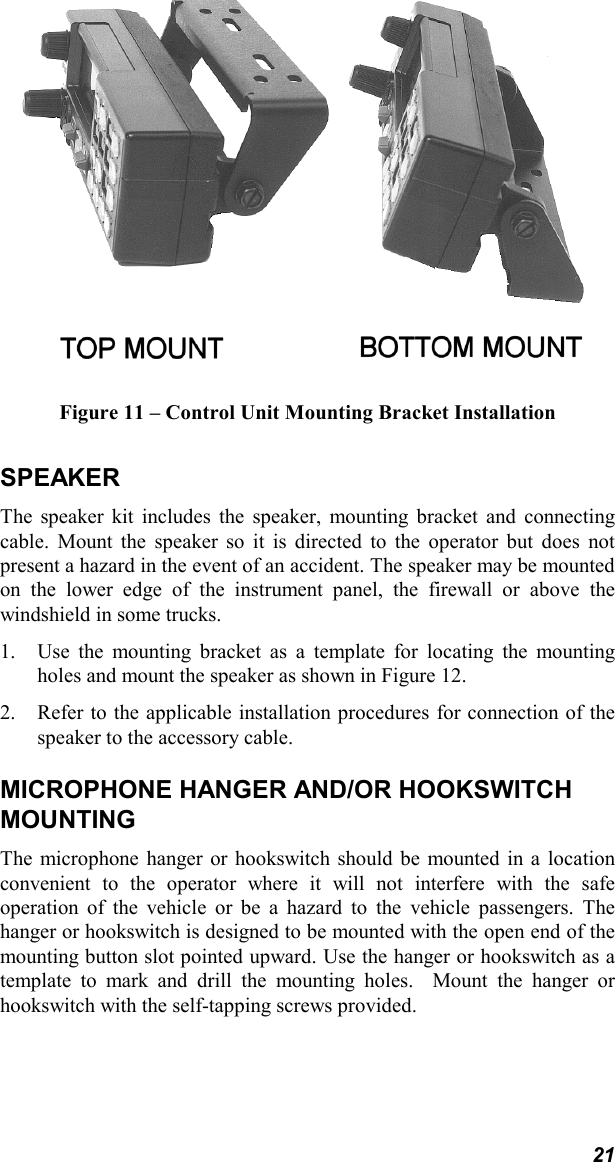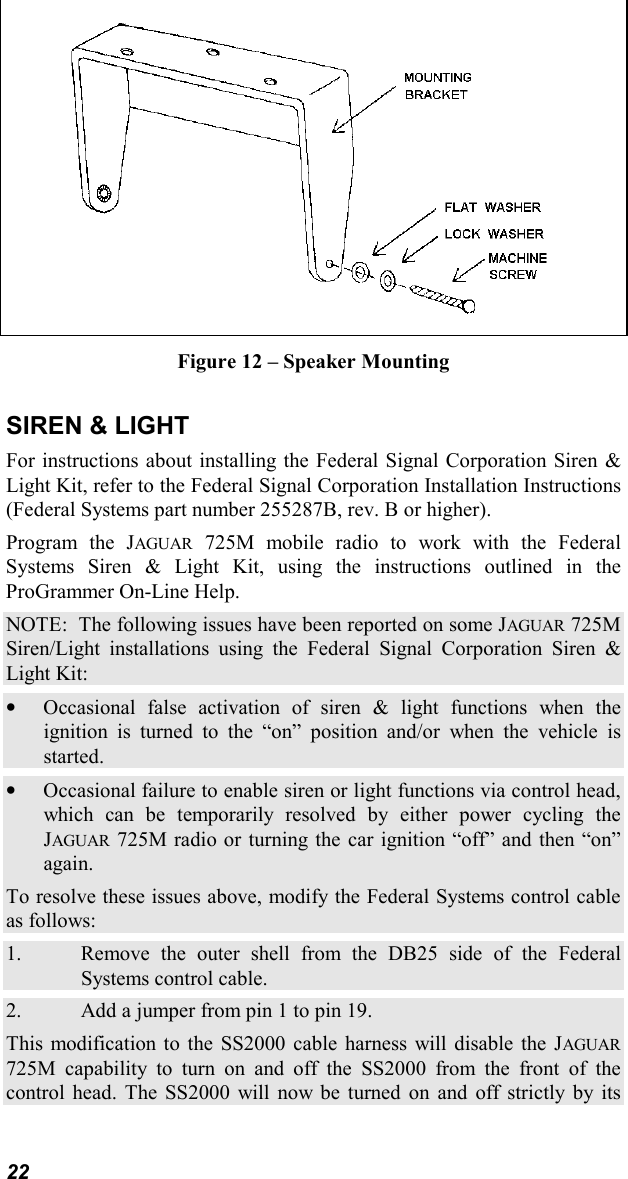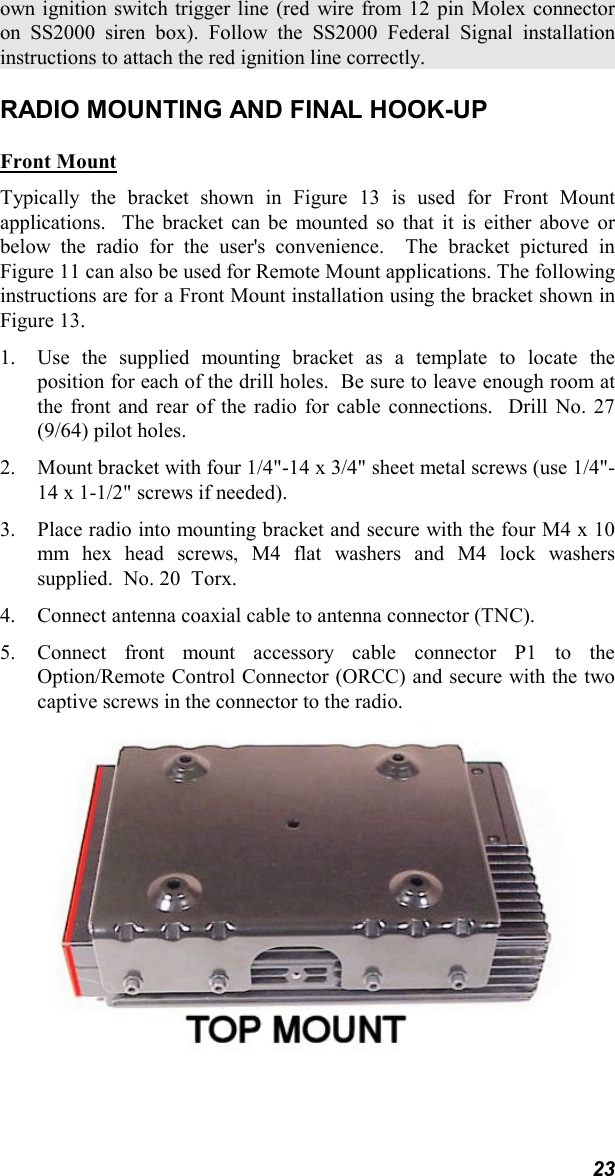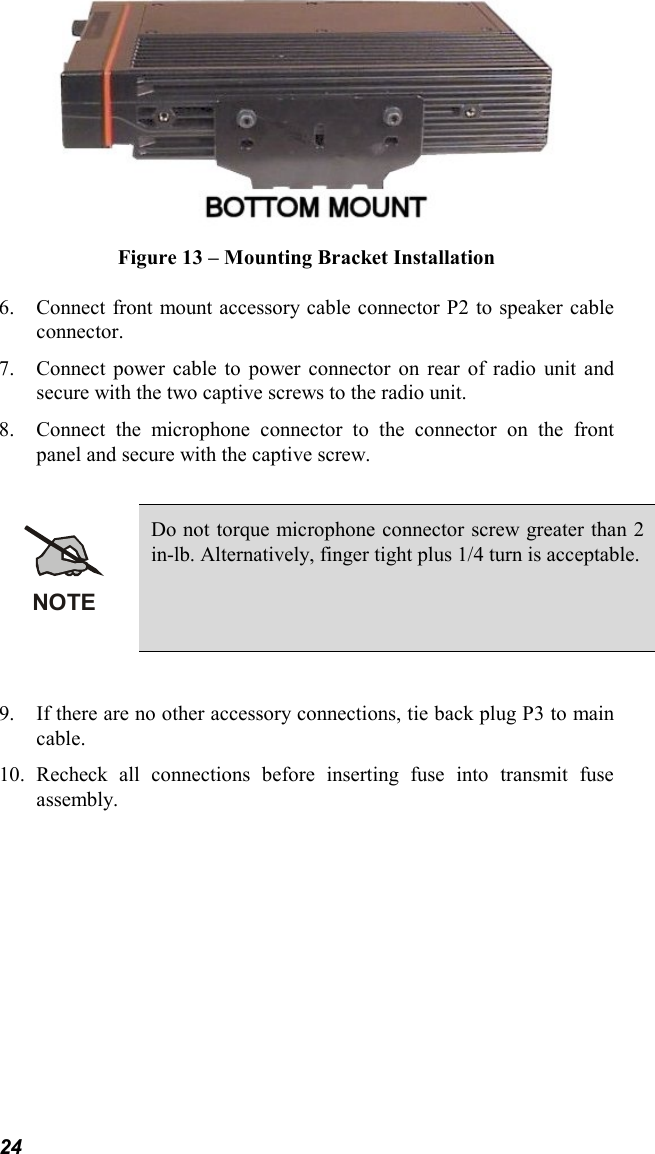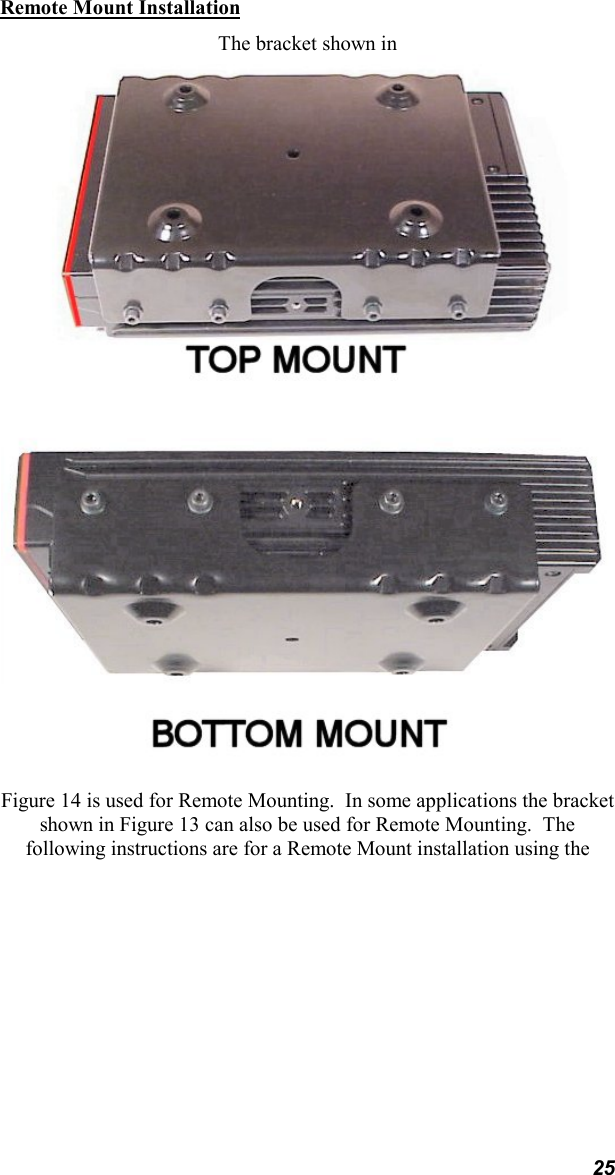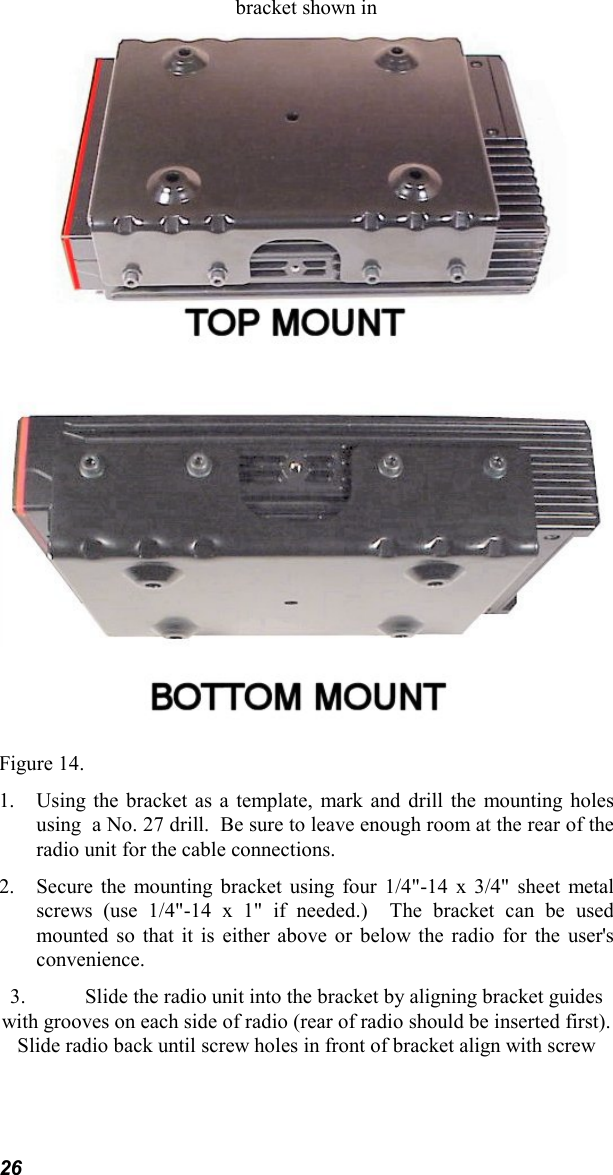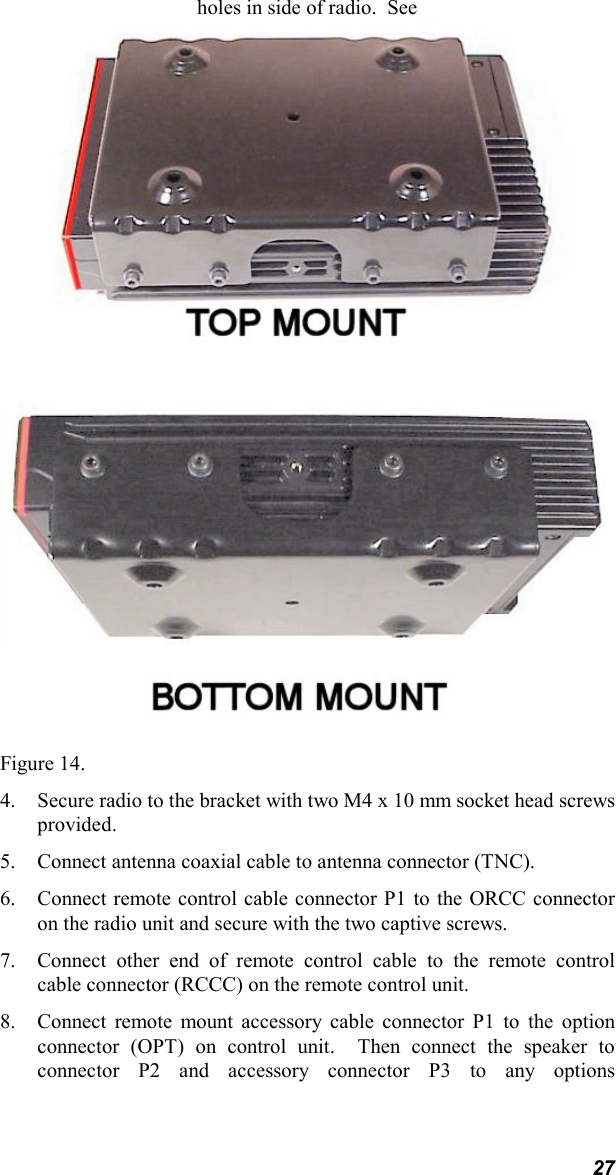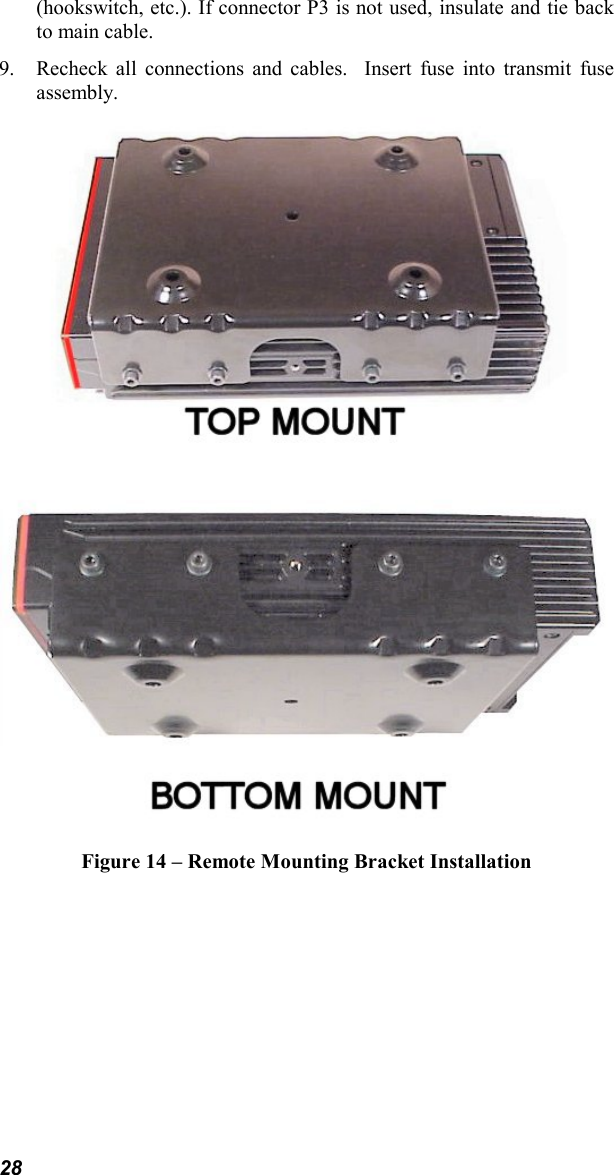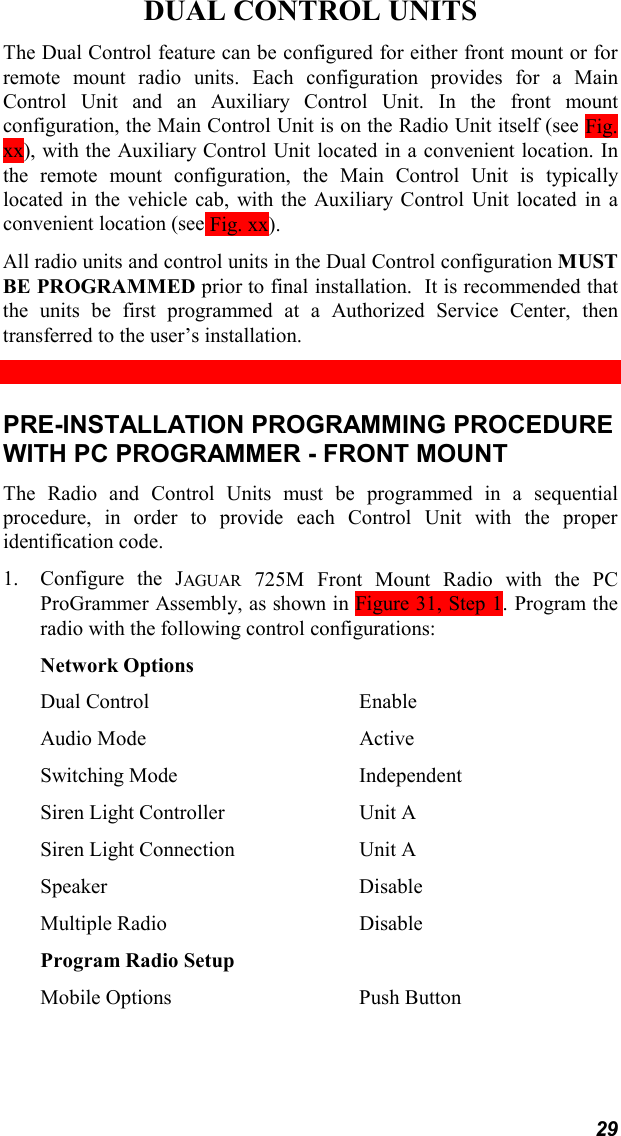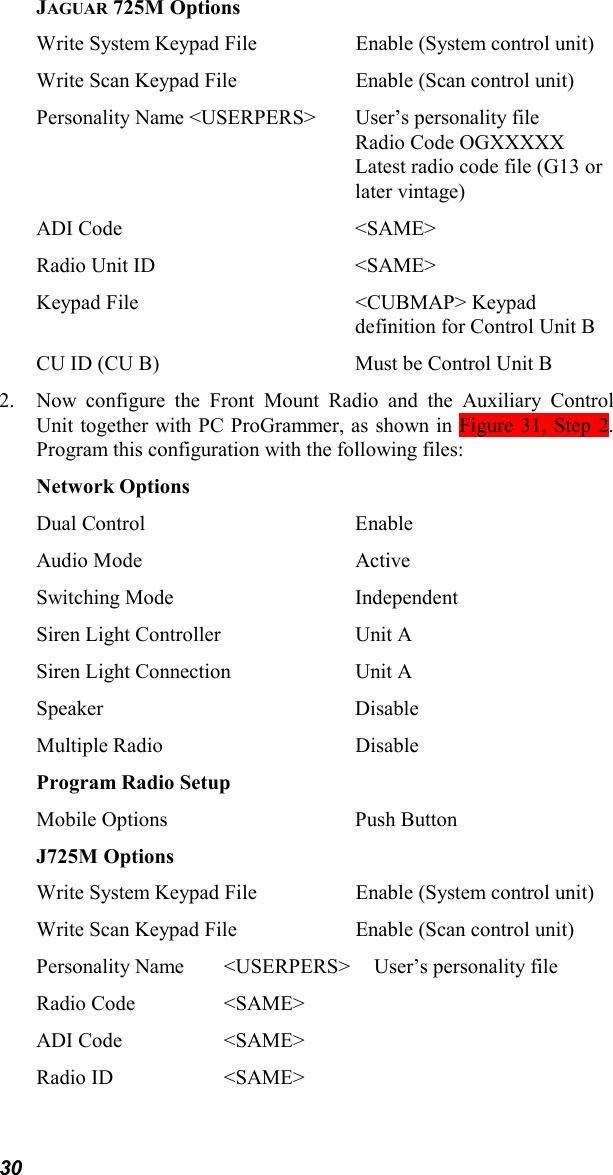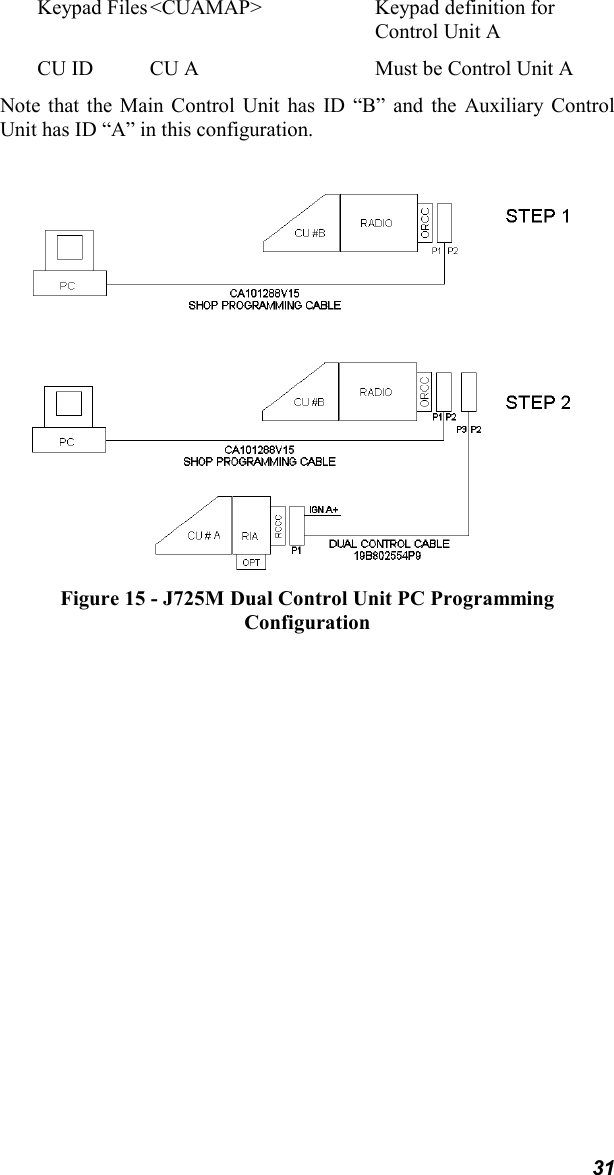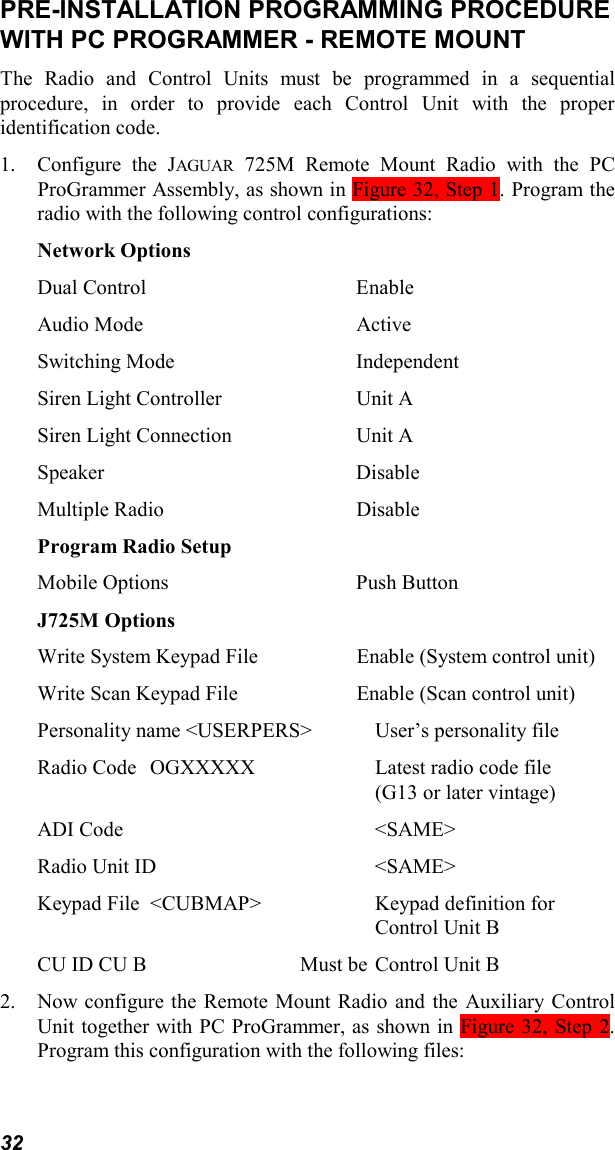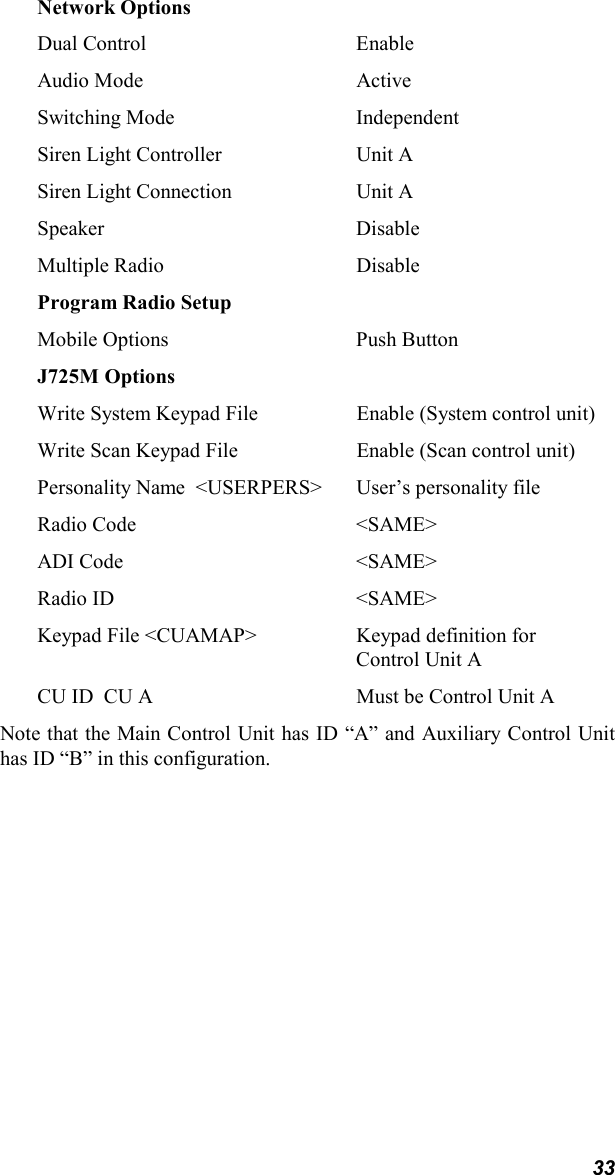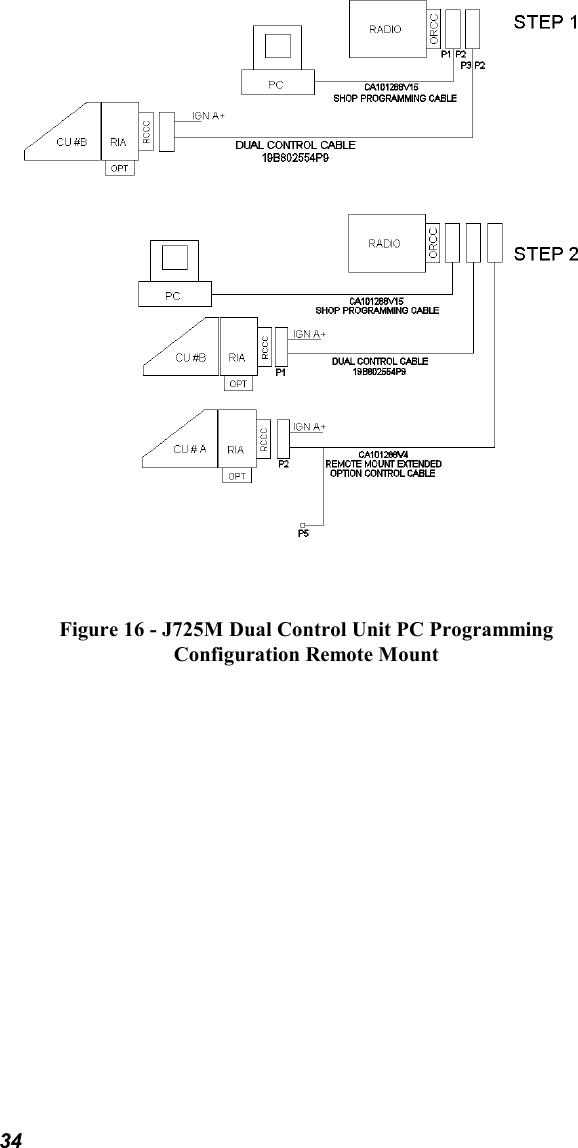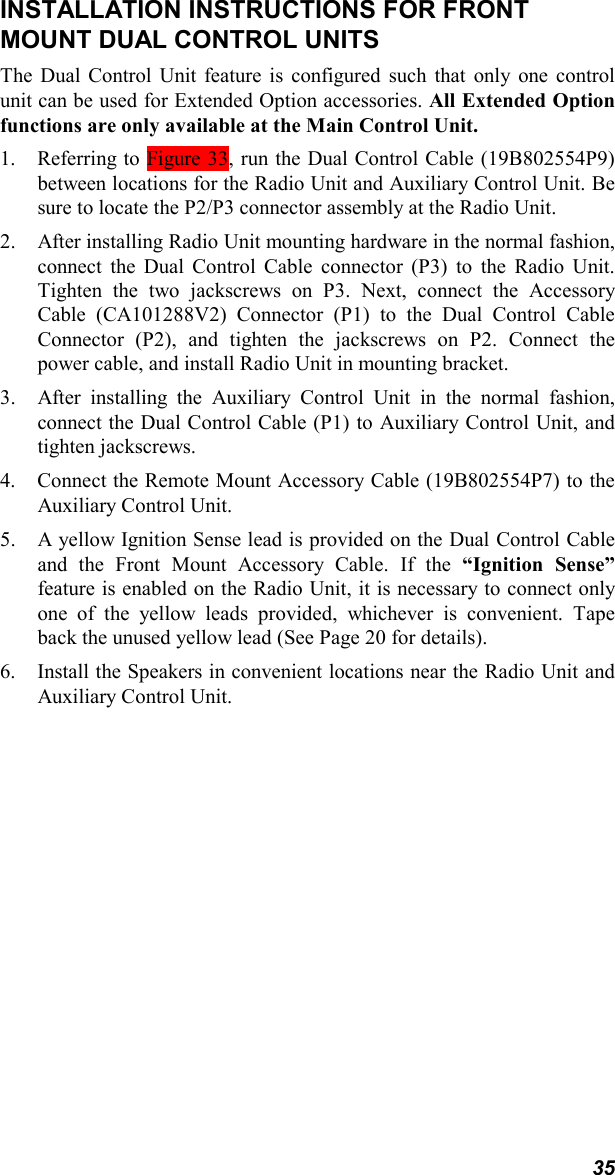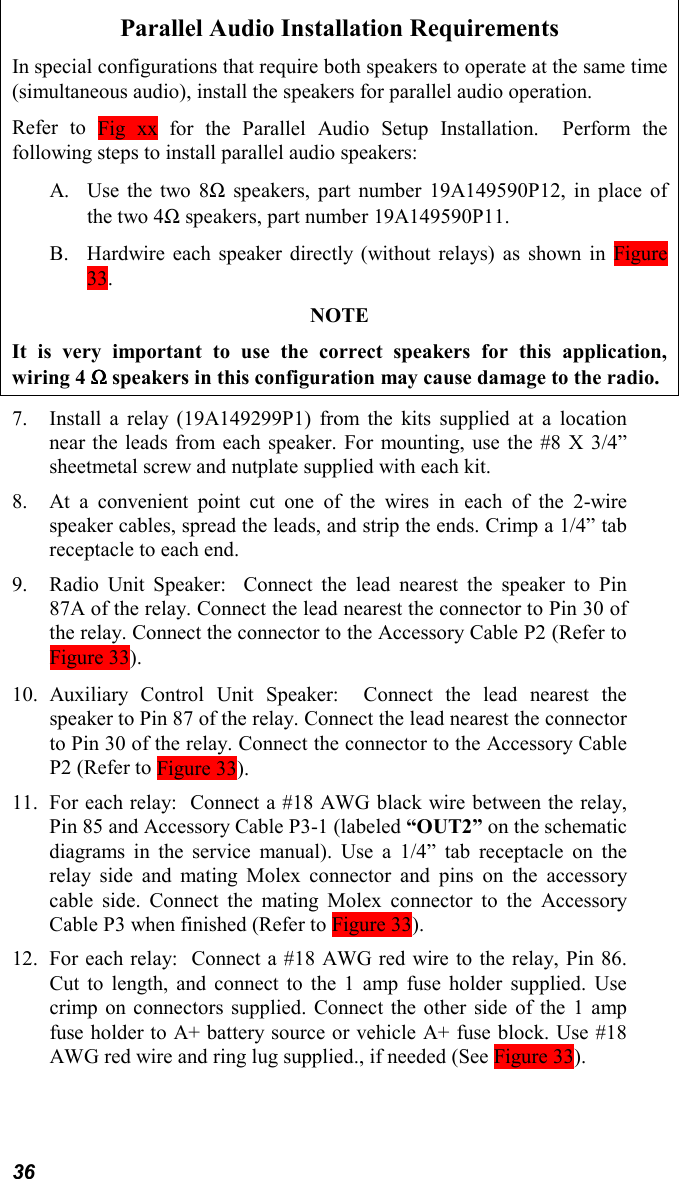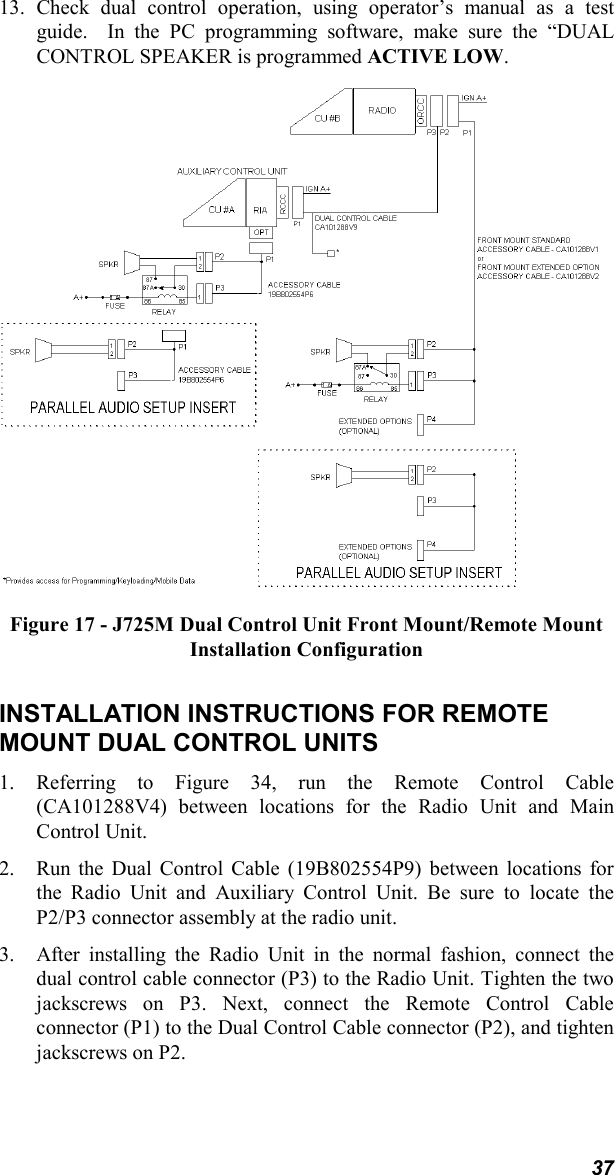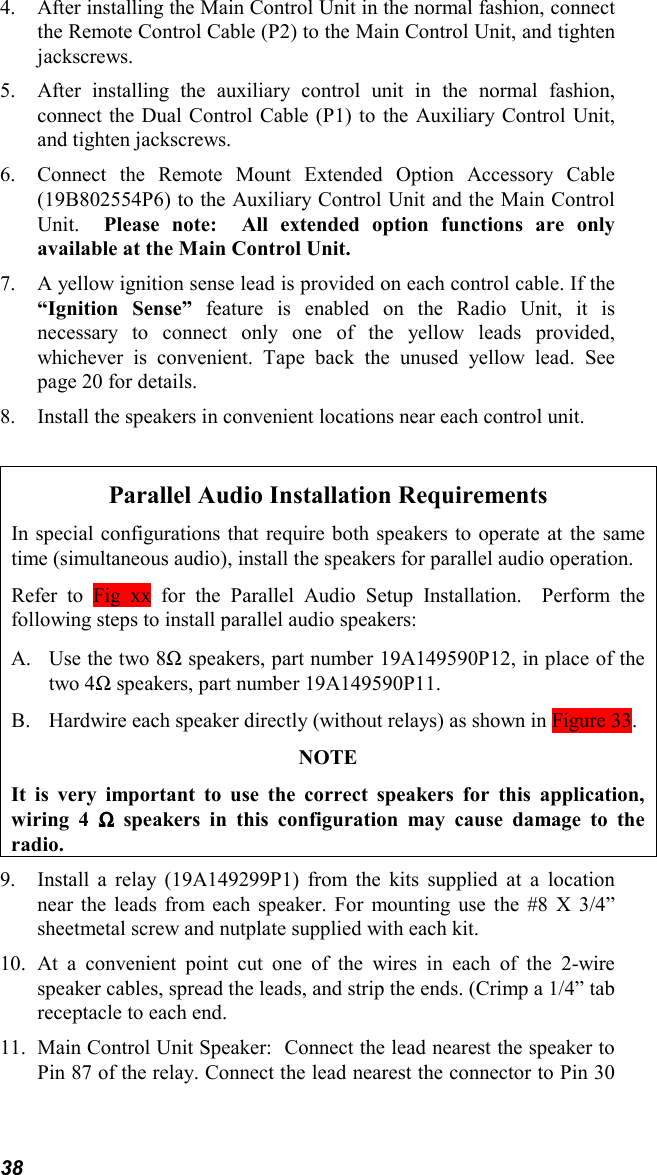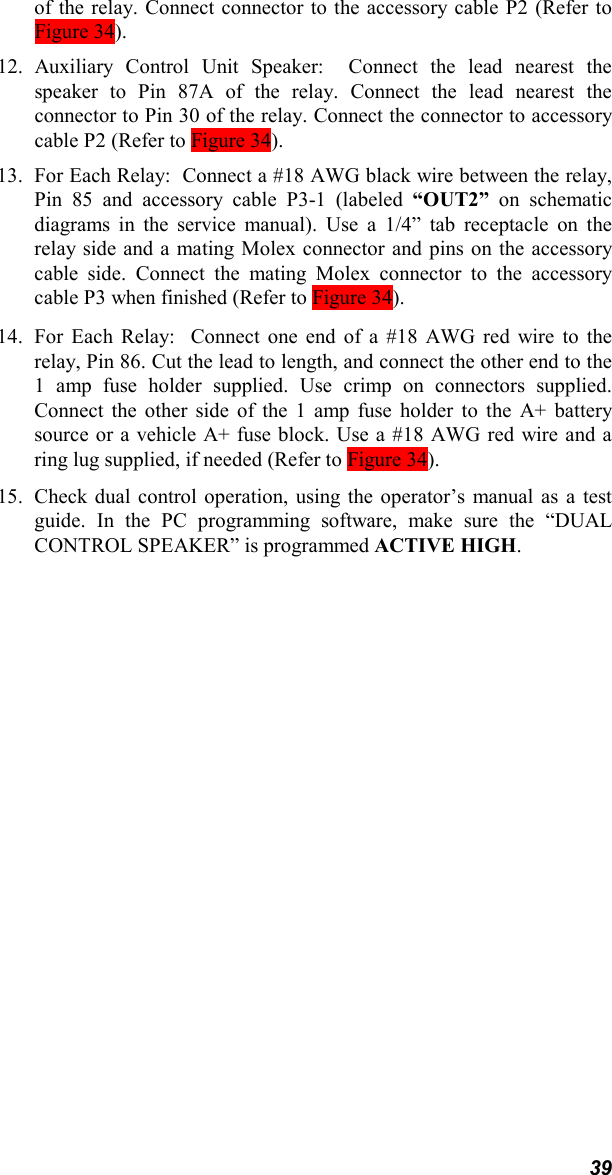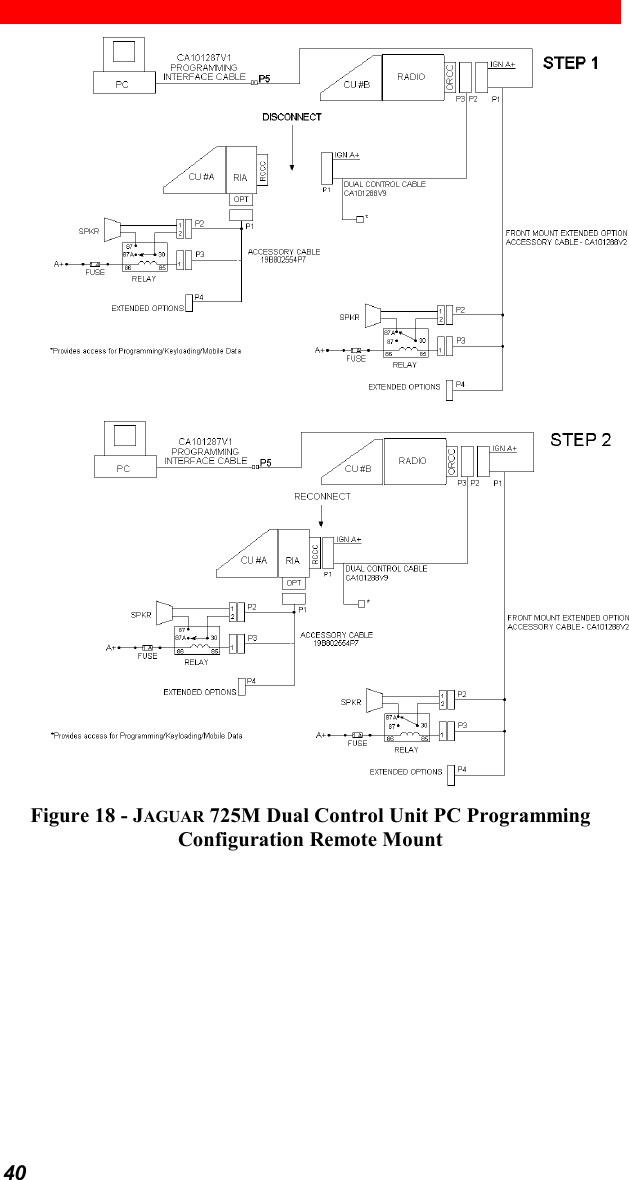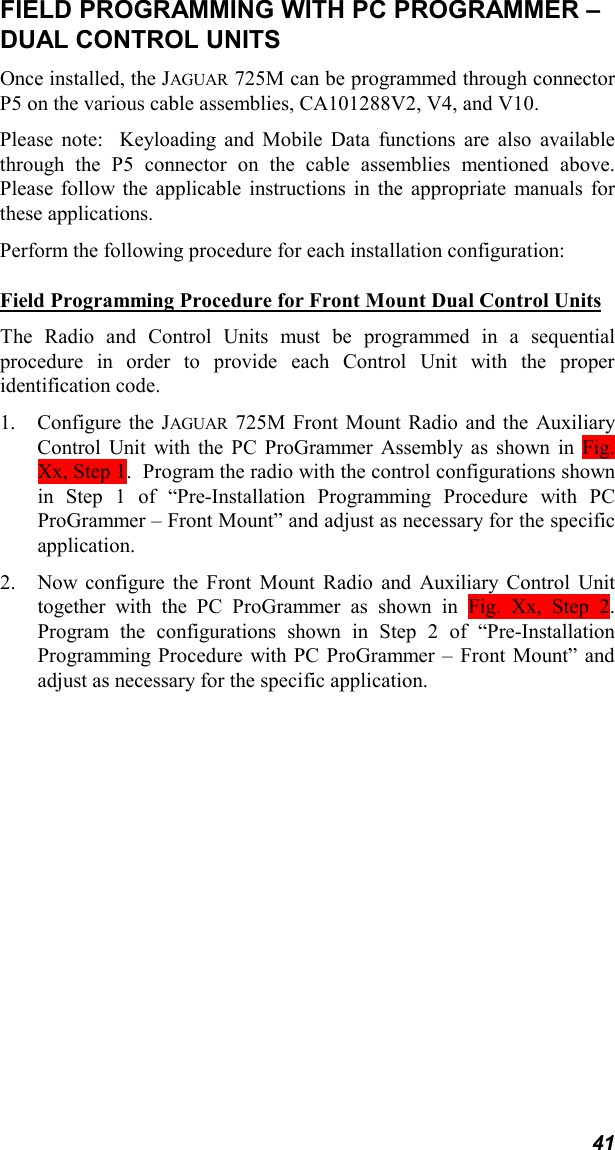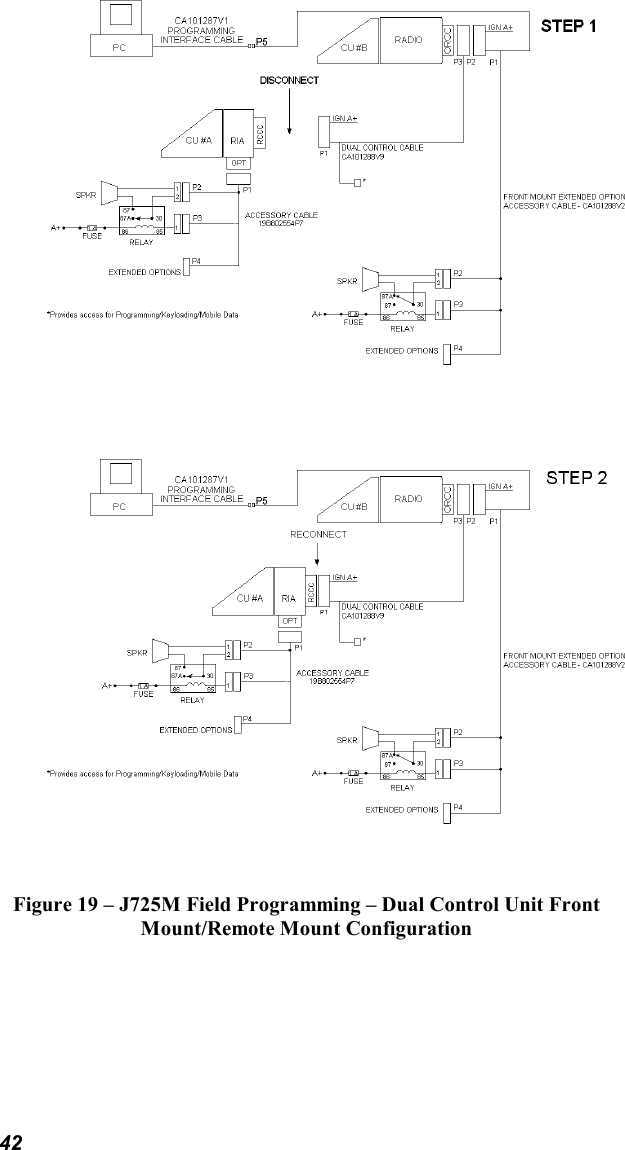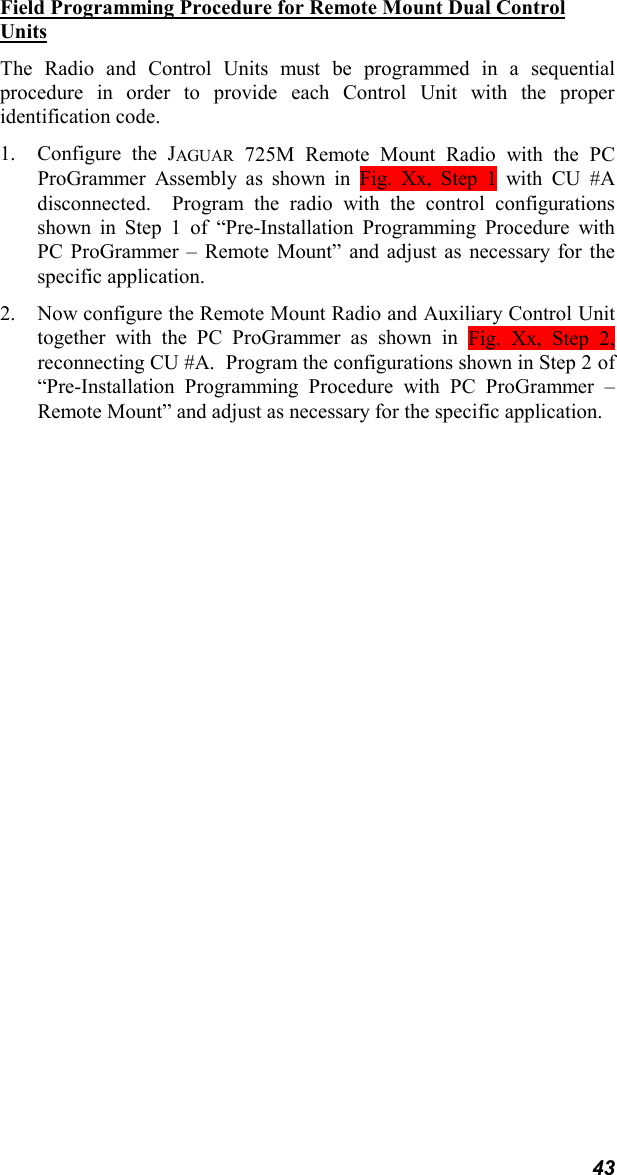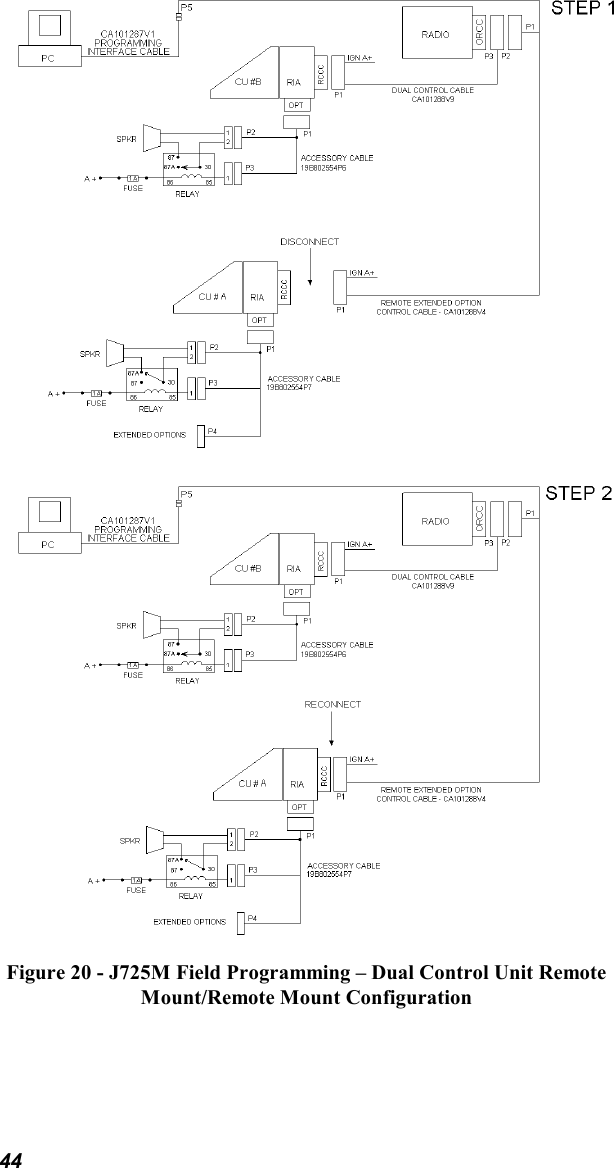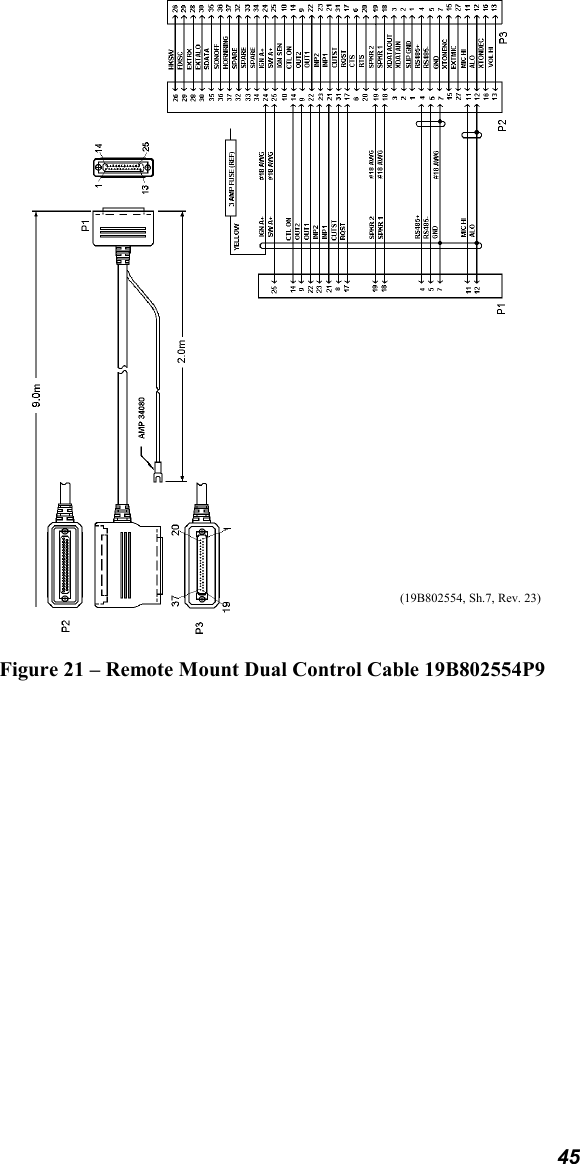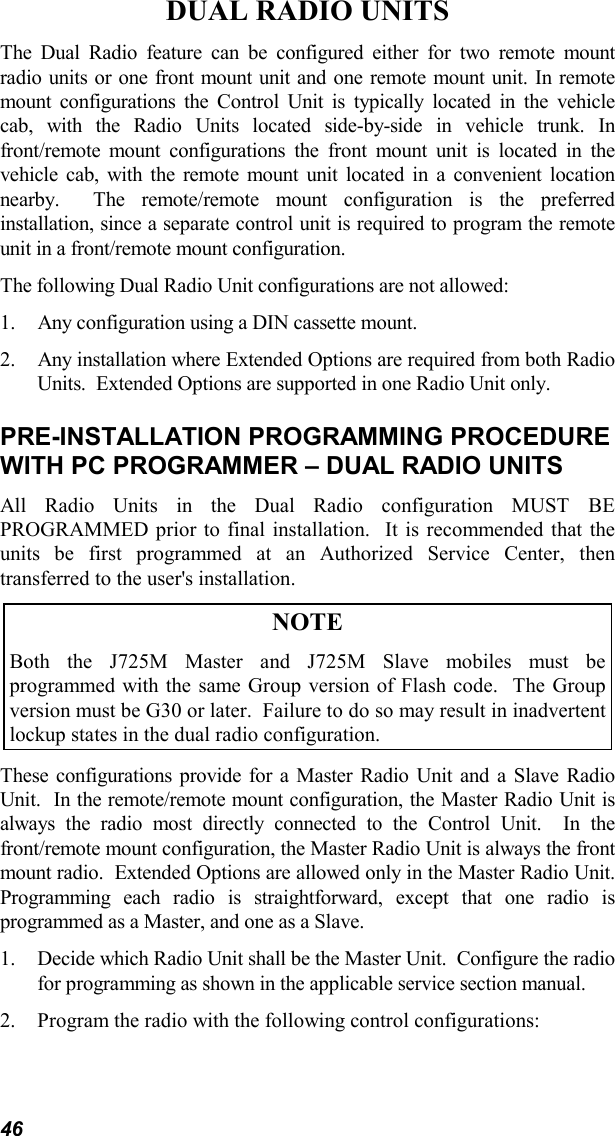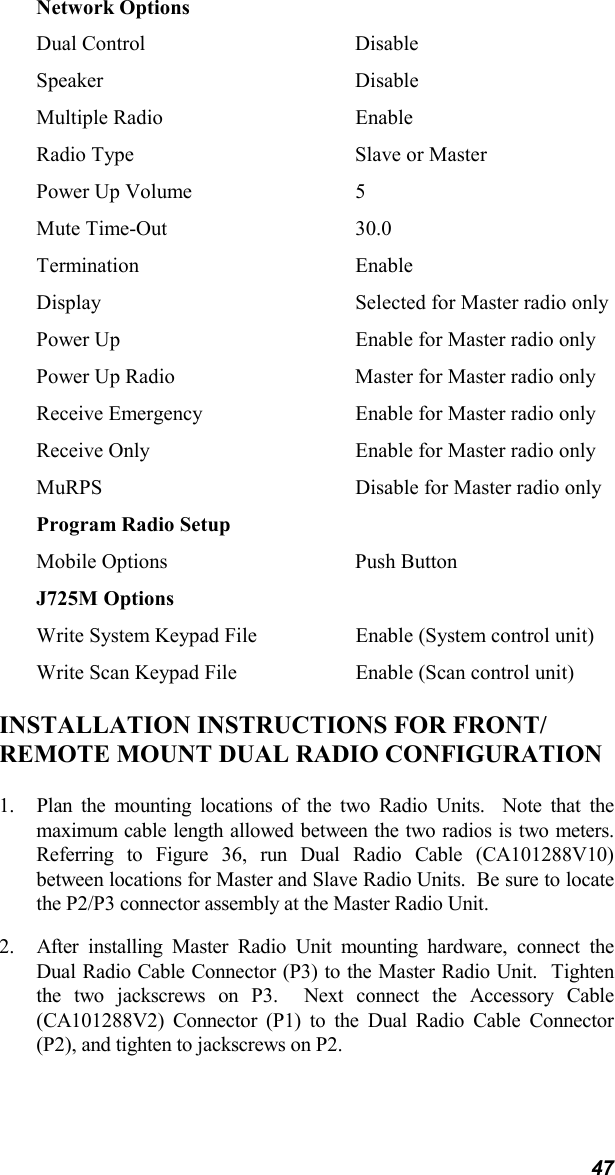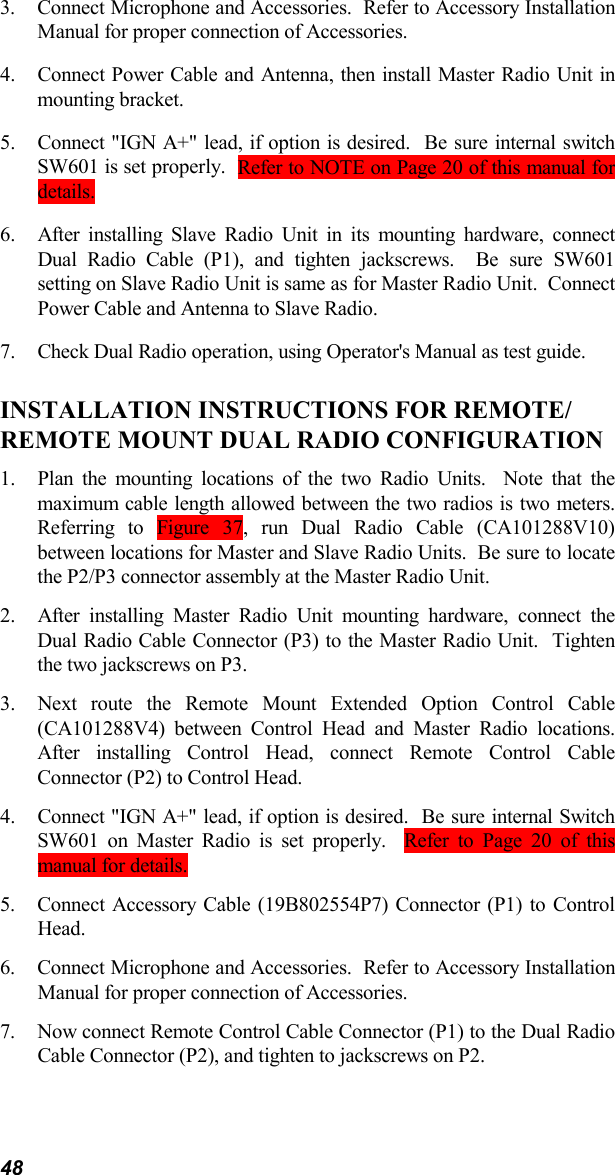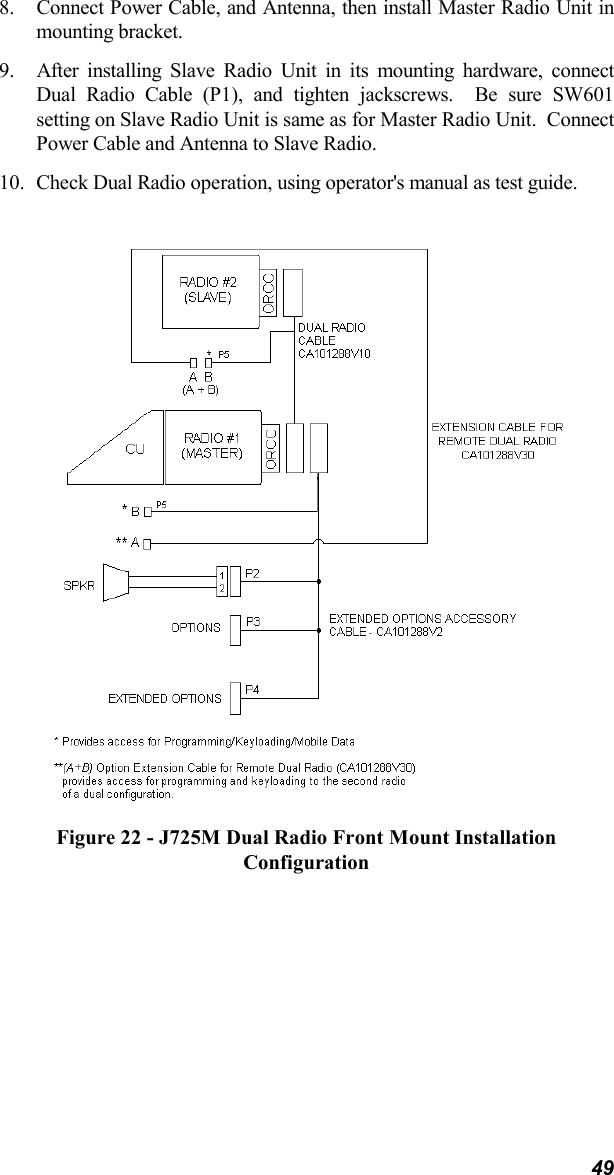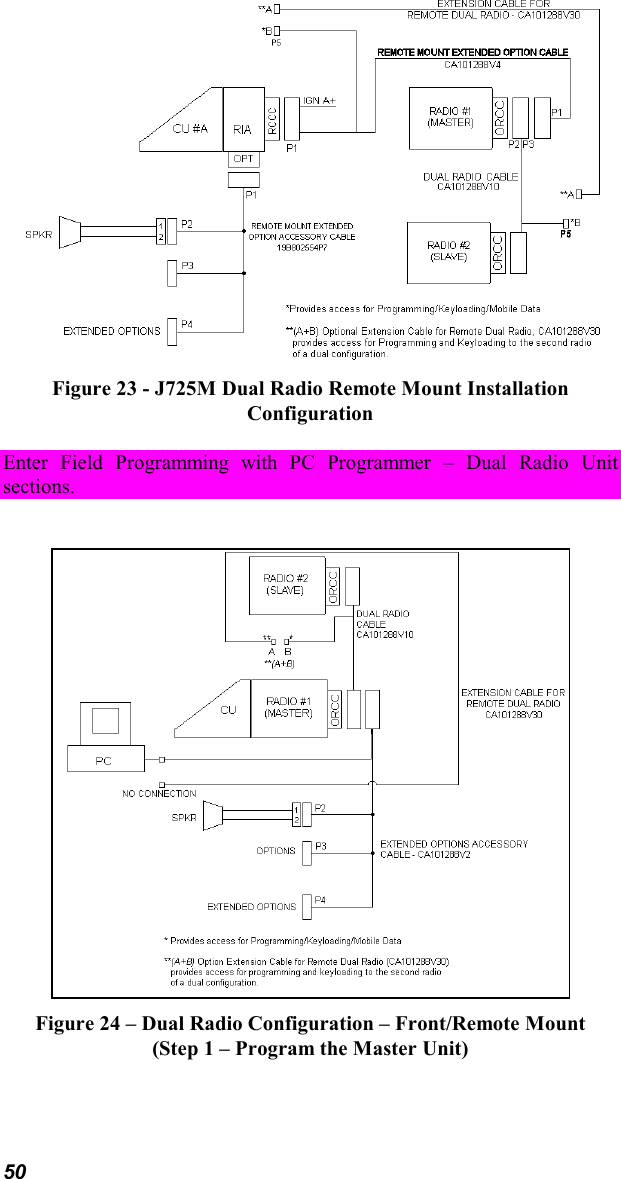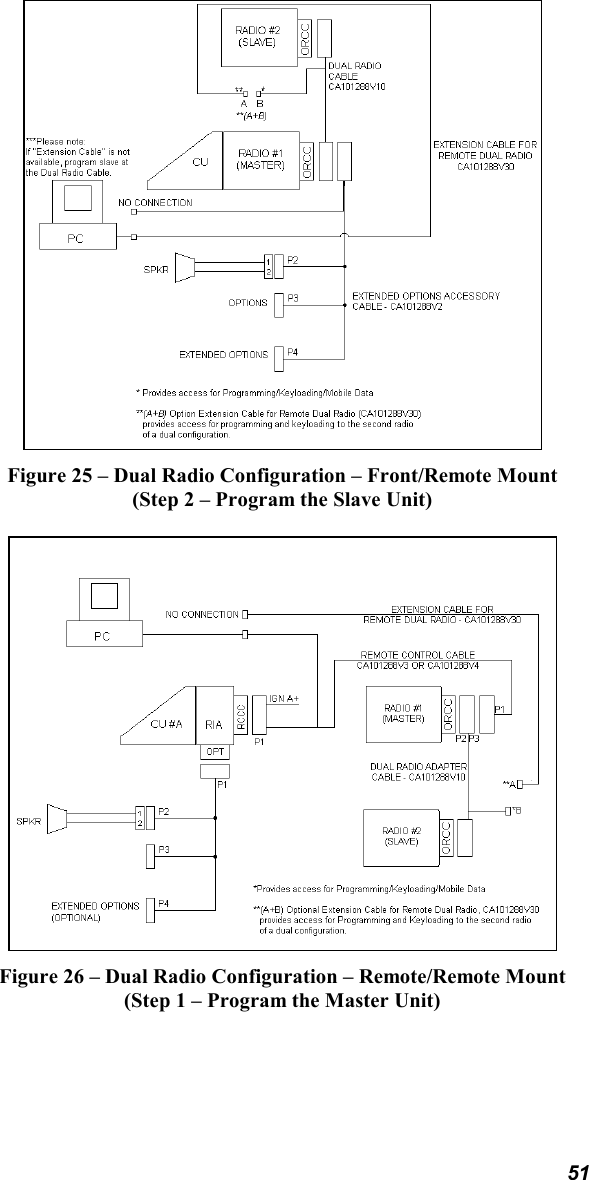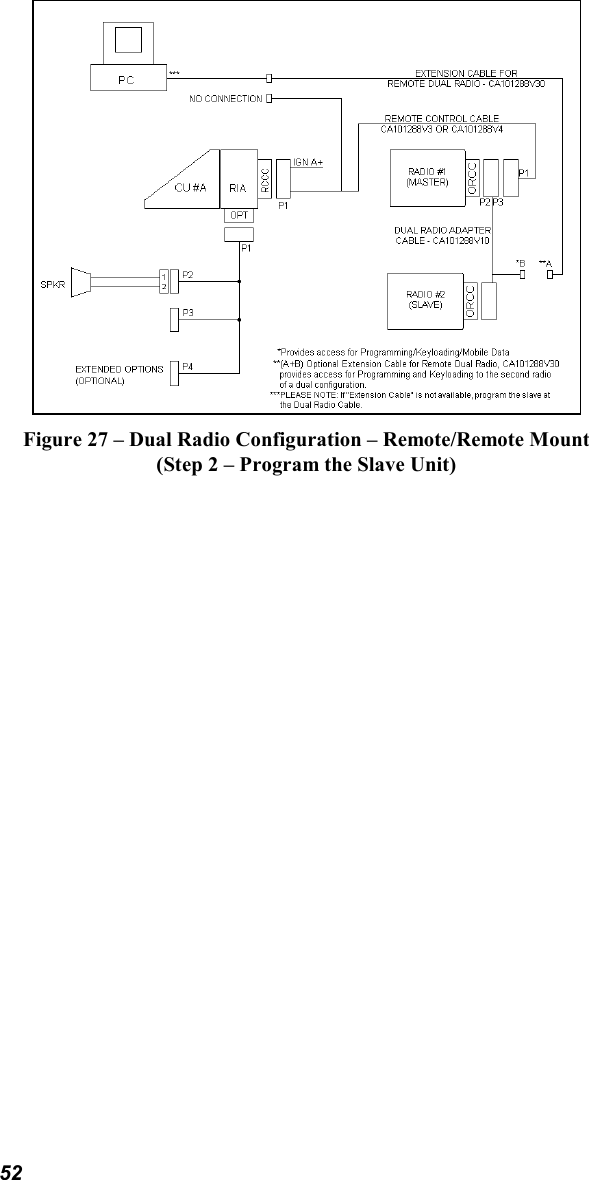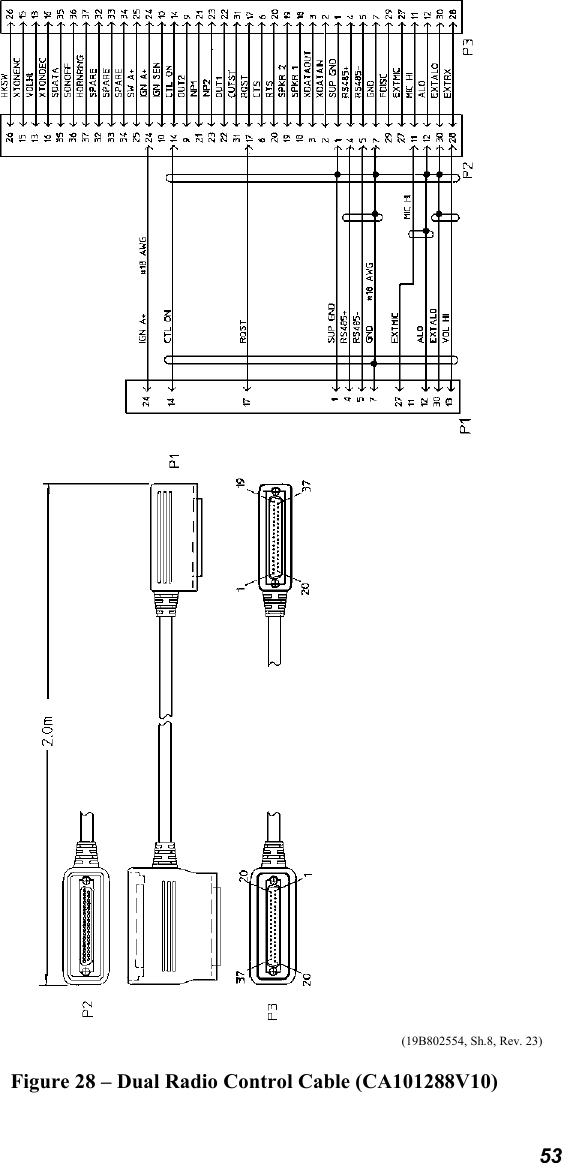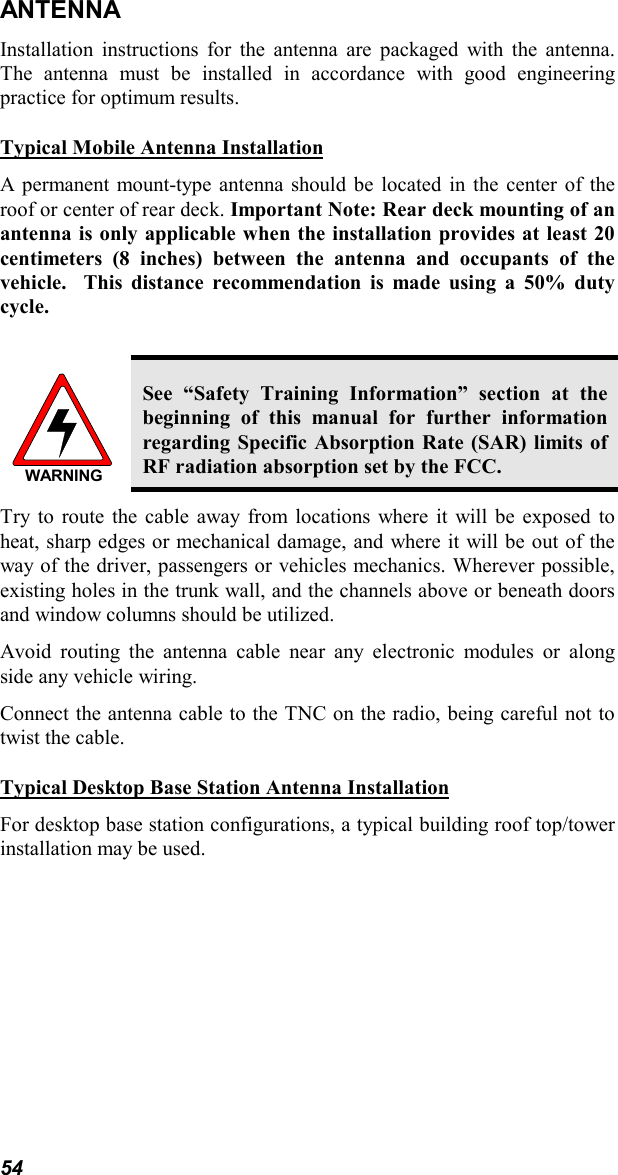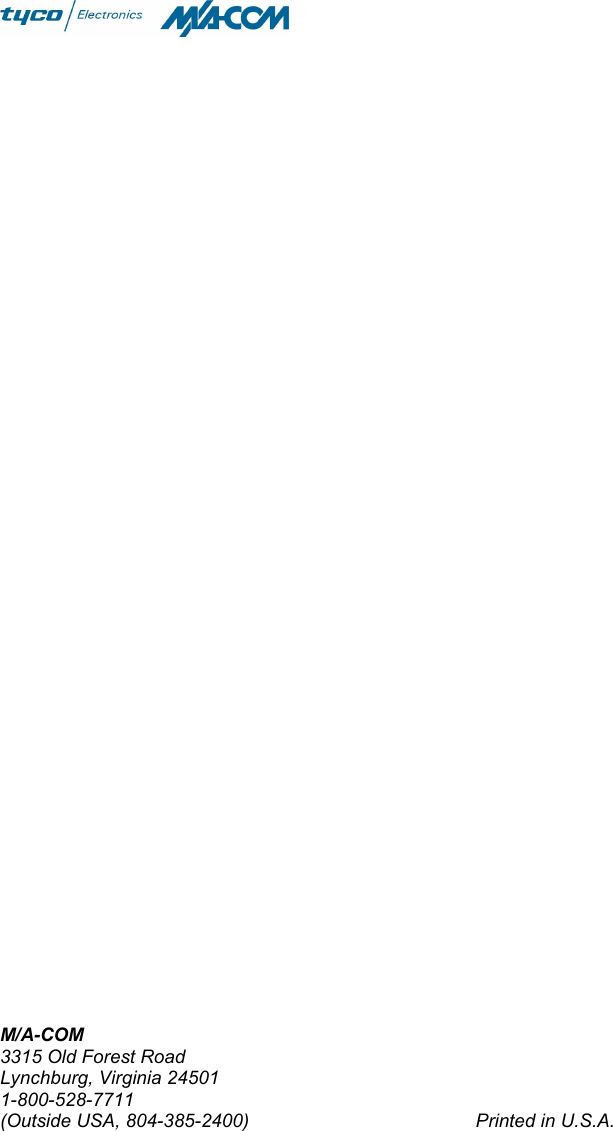HARRIS TR-0012-E 700M 800 MHz Mobile Radio User Manual 121701 Installation Manual
HARRIS CORPORATION 700M 800 MHz Mobile Radio 121701 Installation Manual
HARRIS >
Contents
- 1. 121701 Installation Manual
- 2. Motorcycle manual
121701 Installation Manual

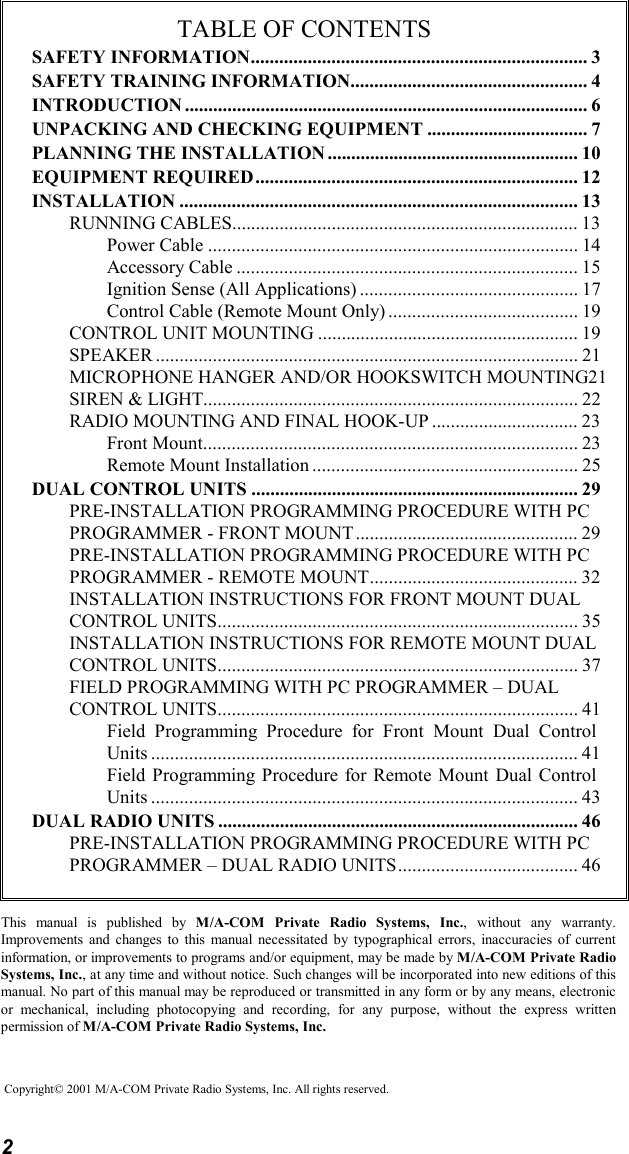
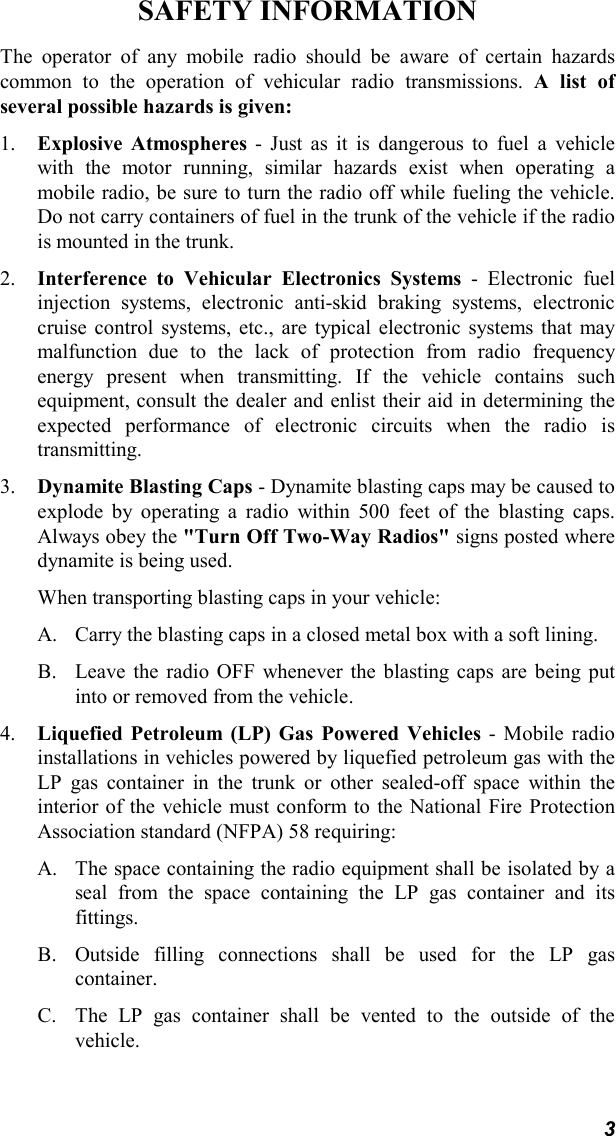
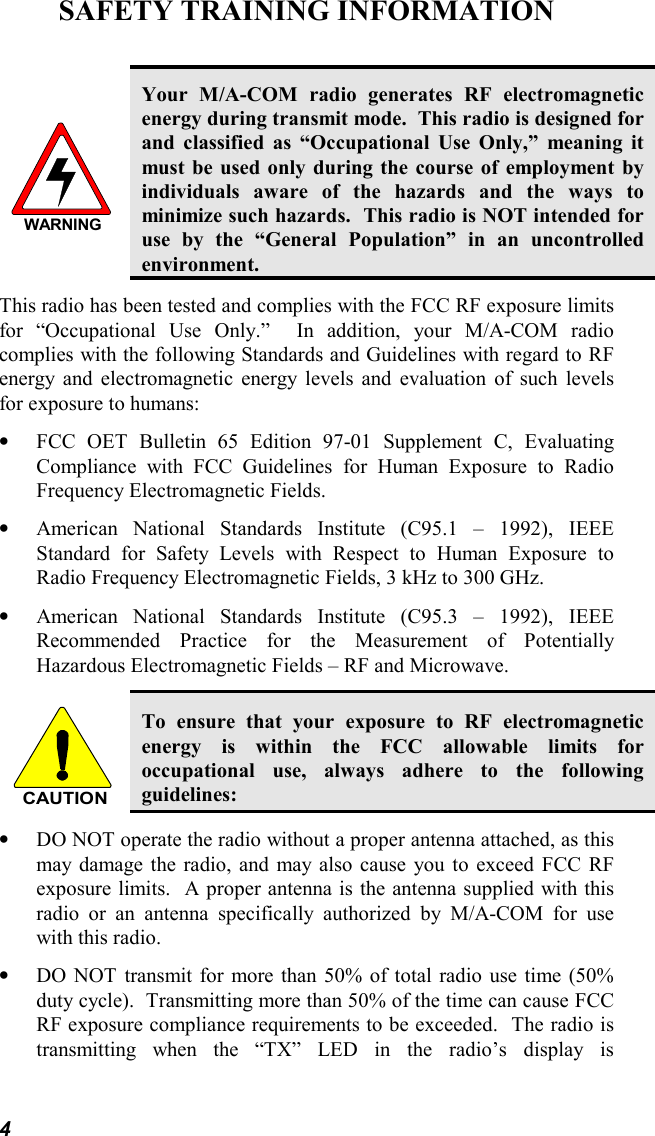
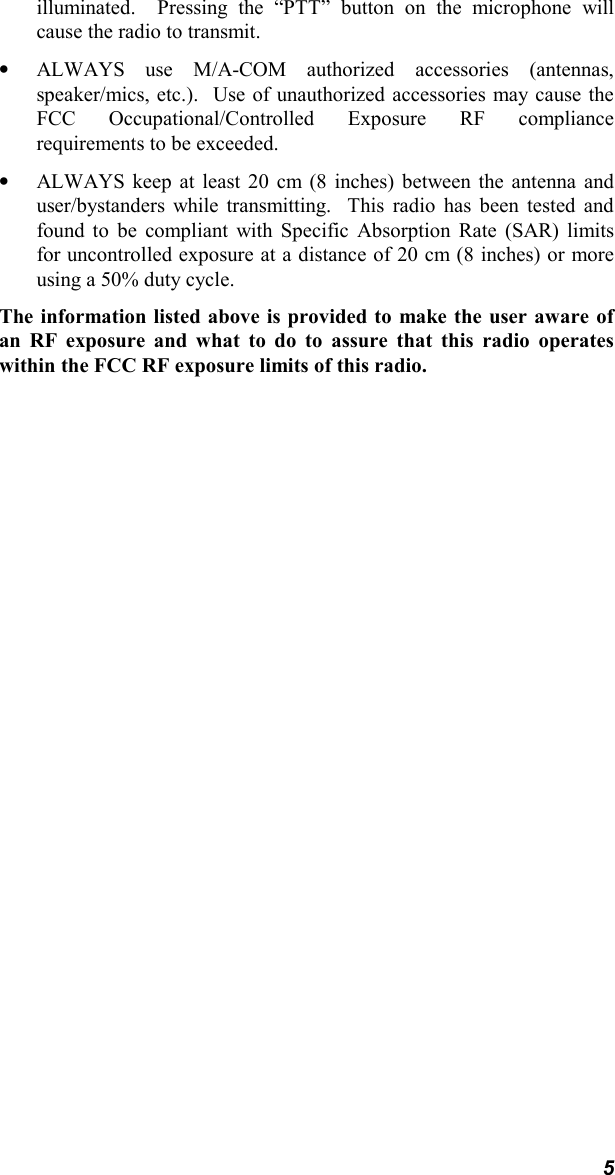
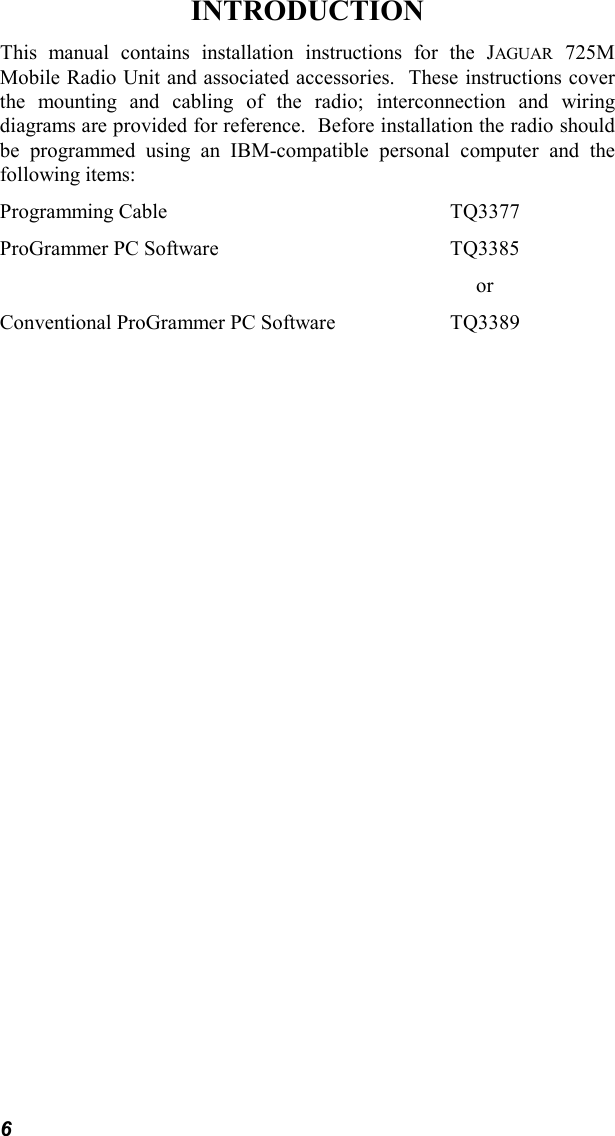
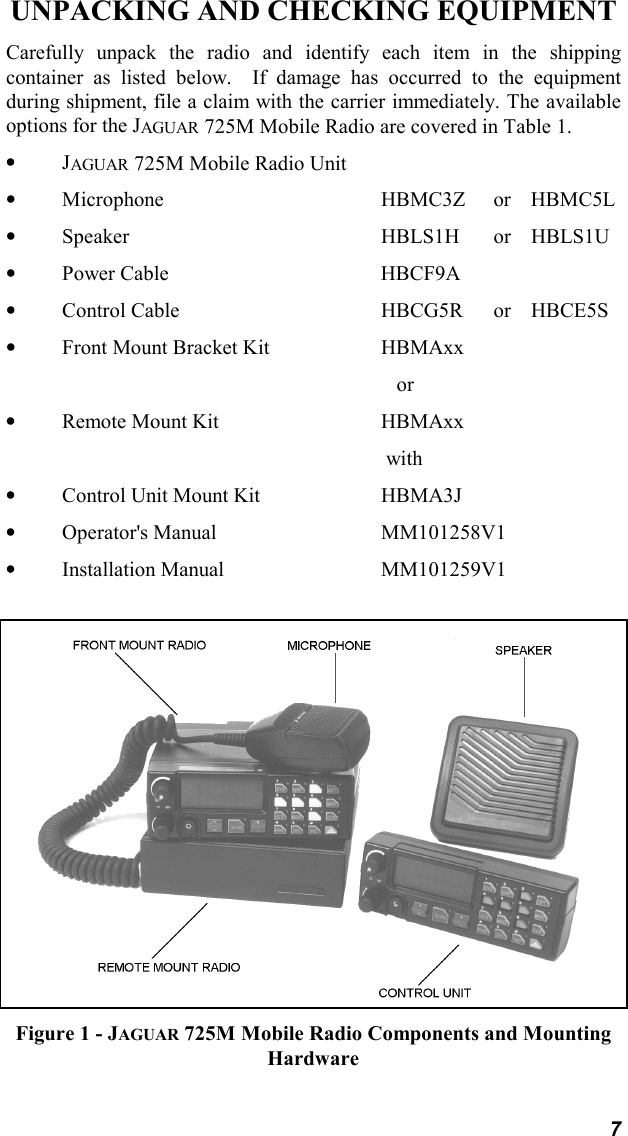
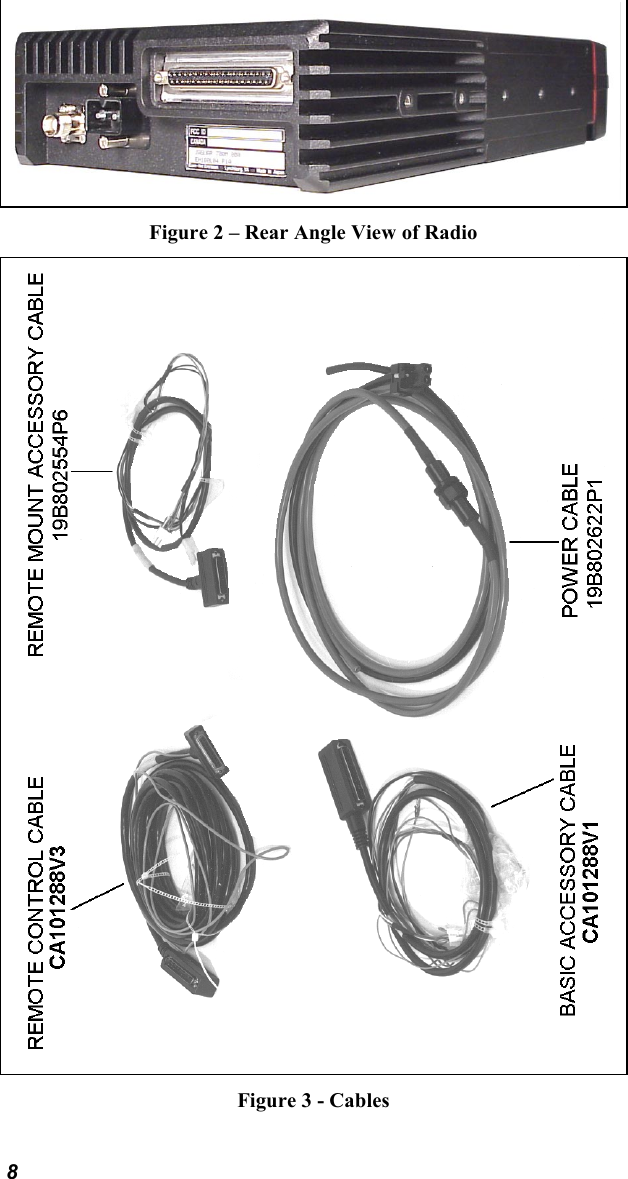
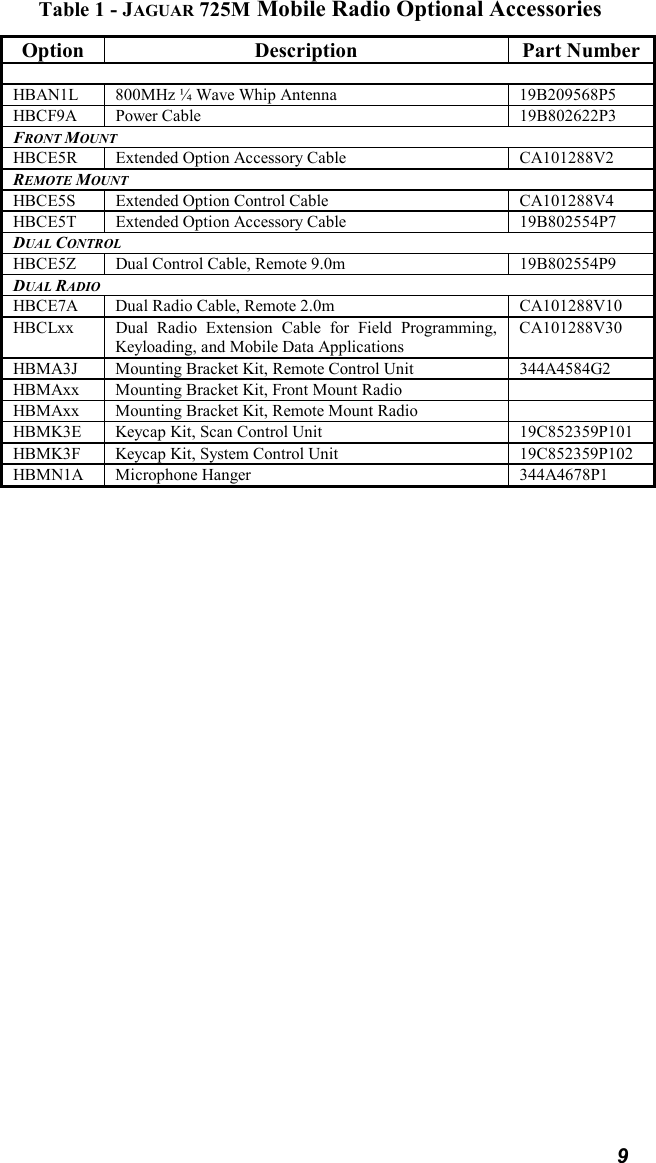
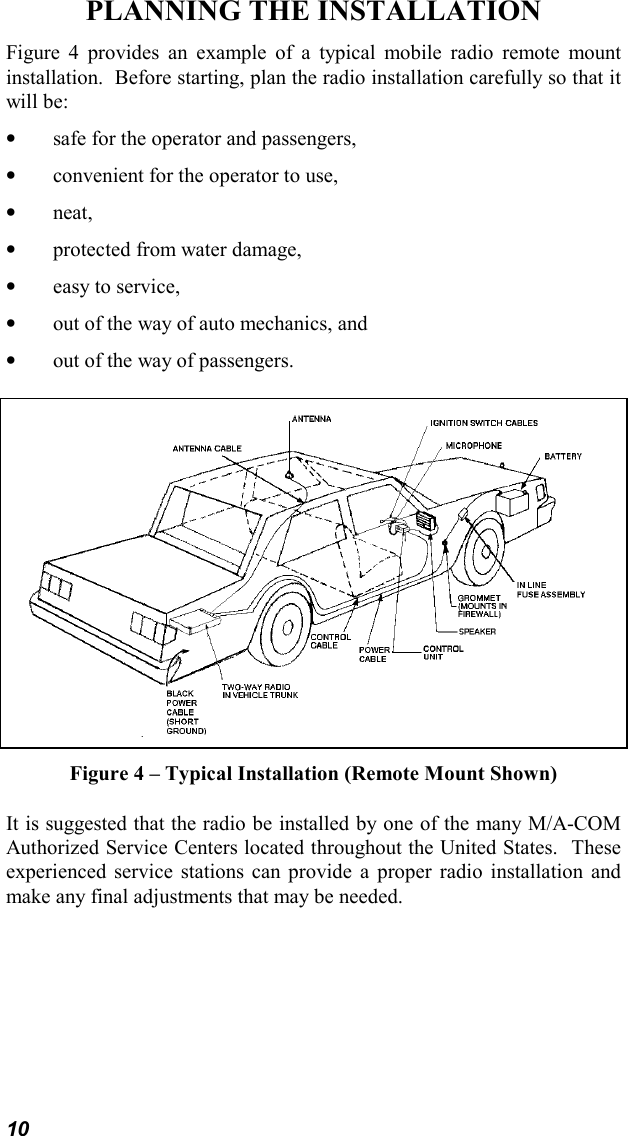
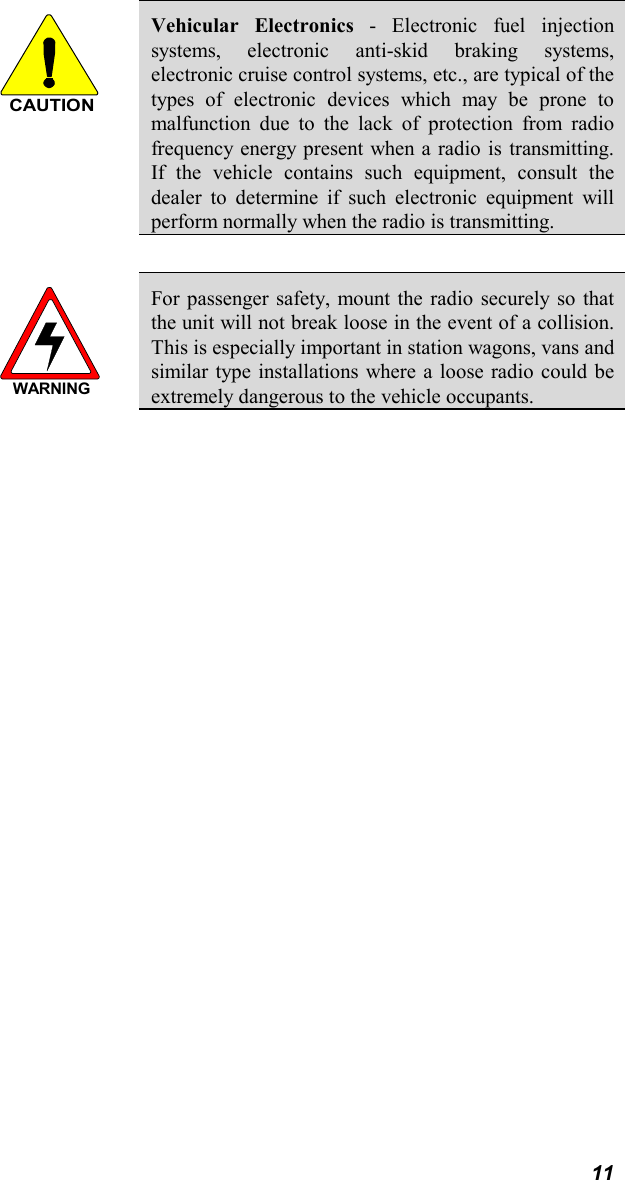
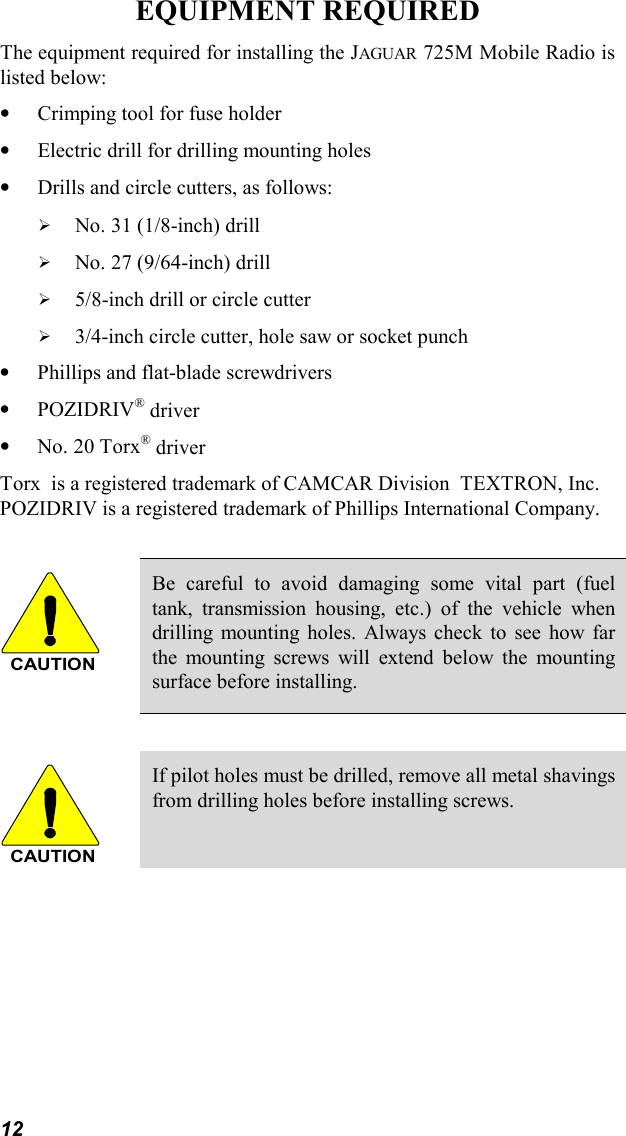
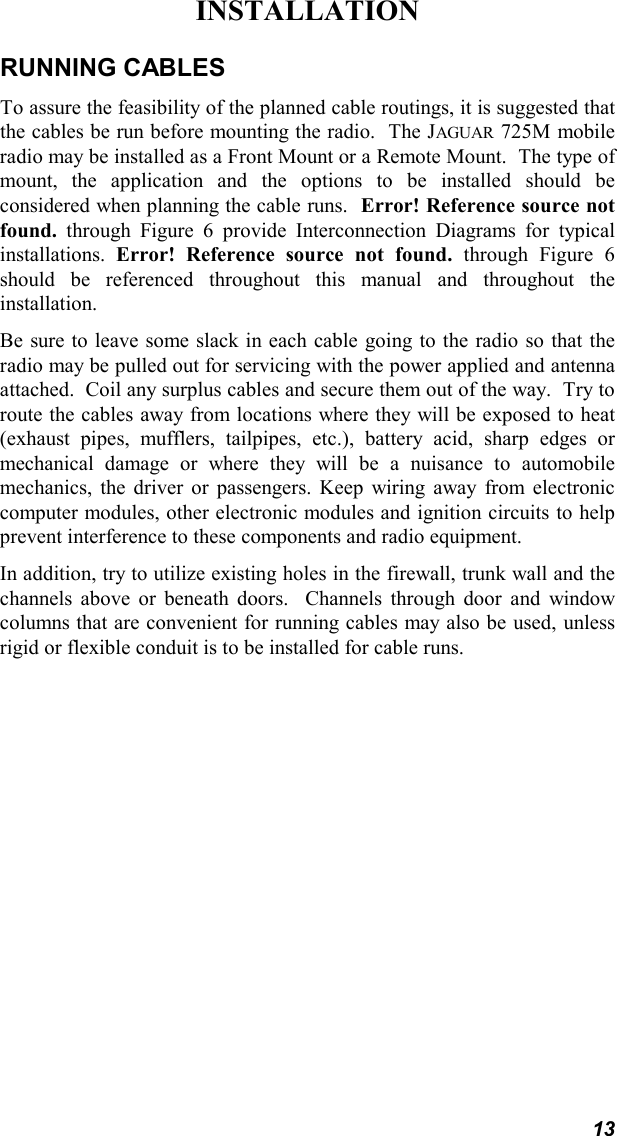
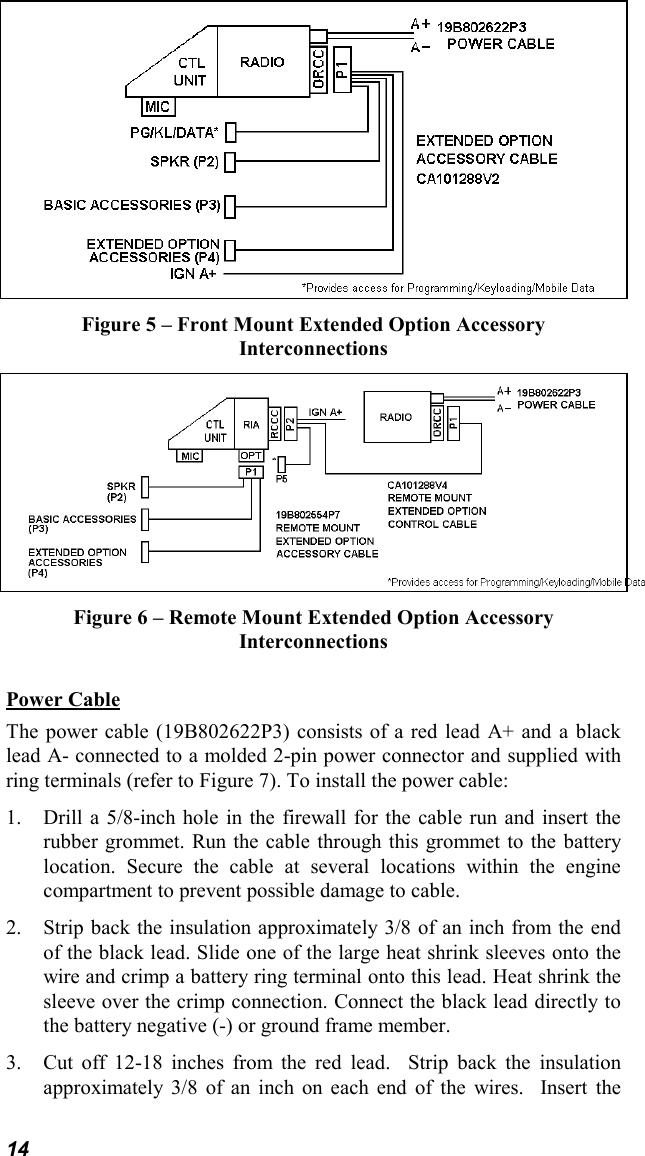
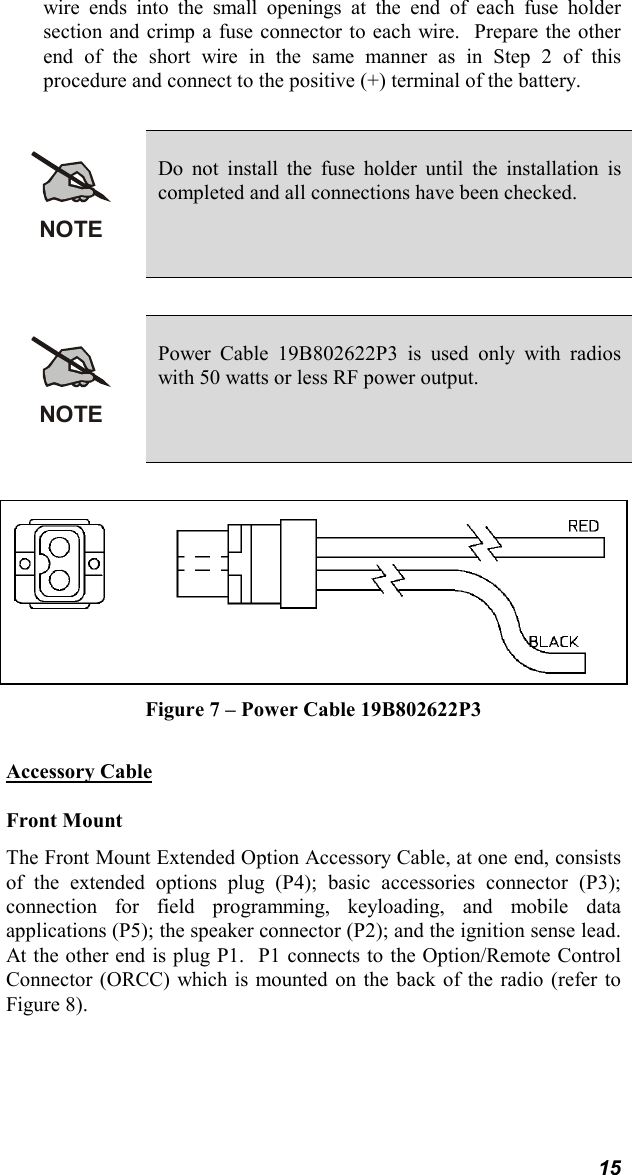
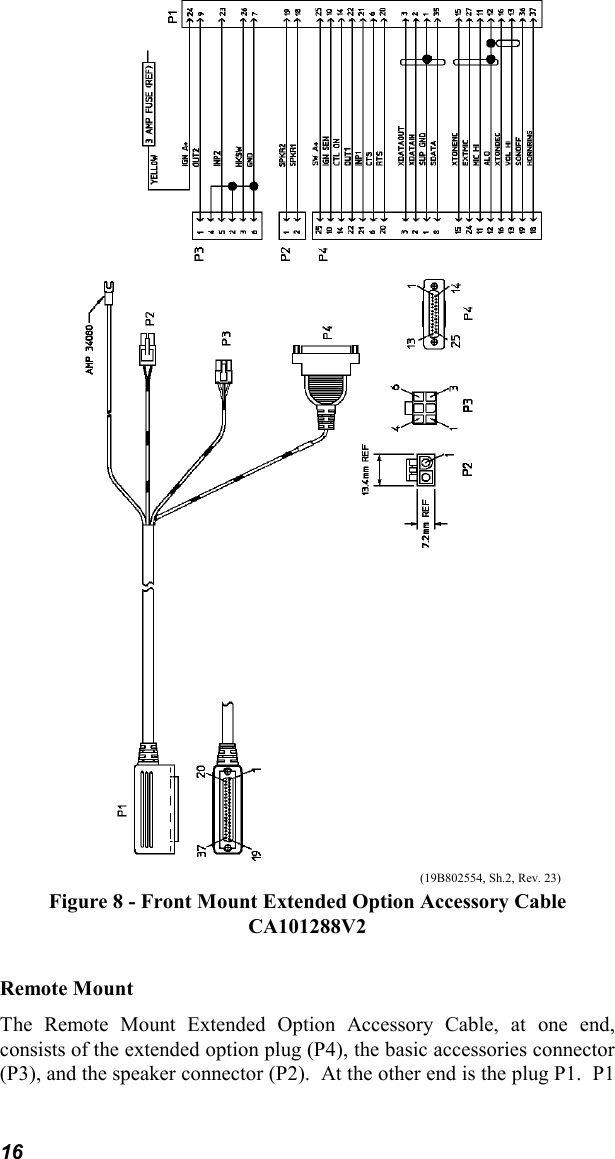
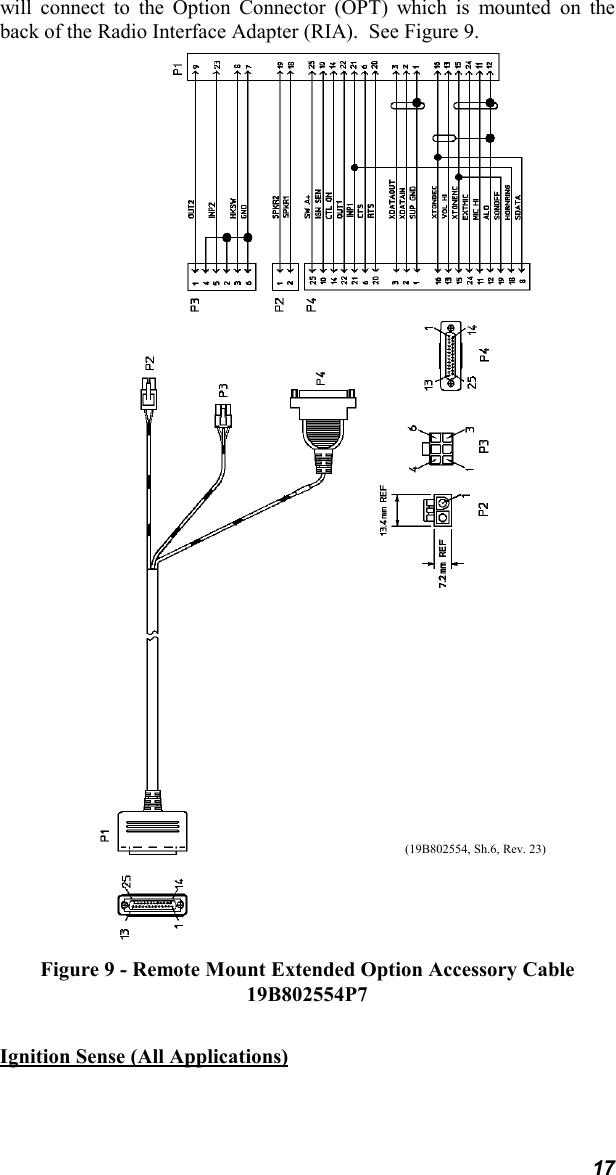
![18NOTEThe radio, as shipped from the factory, has the"ignition sense" feature disabled. As such the radiowill be powered ON or OFF as determined by the frontpanel ON/OFF/VOLUME control only (assuming A+and A- are connected). If it is desired to enable the"ignition sense" feature, open the top cover of the radioand remove the shield from logic PWB. Slide switchSW601 from position 3-2 to 1-2. Replace shield andtop cover. Be sure to apply correct torque to screwsholding top cover in place. See Maintenance Manual.NOTEThe "Accessory" point should drop to ZERO voltswhen cranking the engine and return to +12 volts afterthe engine is started. If a point is chosen that drops to avoltage between zero and +12 volts, the radio mayexecute a power-up cycle several times during start up.It is recommended that the terminal be measured with avoltmeter to be sure it shuts off (goes to zero volts)during the cranking of the engine.The fuse holder must be attached to the yellow sense lead along with thering terminal as follows:1. Cut the yellow sense lead approximately 6-12" from the end that willbe connected to the power source.2. Strip the insulation from each end of the short lead and from the endof the long lead at least 3/8".3. Insert the stripped end of the long lead and one end of the short leadinto the narrow end of each fuse holder half.4. Crimp the leads in the fuse holder halves with a crimping tool.5. Insert the 3 amp fuse into one end of the fuse holder and join the twofuse holder halves firmly together.6. Attach the ring terminal to the end of the short lead and connect thislead to the ignition "ON" sense point [preferably an "Accessory"point (in the vehicle fuse panel) that is switched on when the vehicleignition switch is in the ACCESSORY and RUN positions].](https://usermanual.wiki/HARRIS/TR-0012-E.121701-Installation-Manual/User-Guide-183947-Page-18.png)
